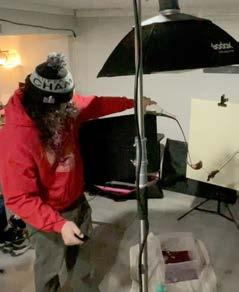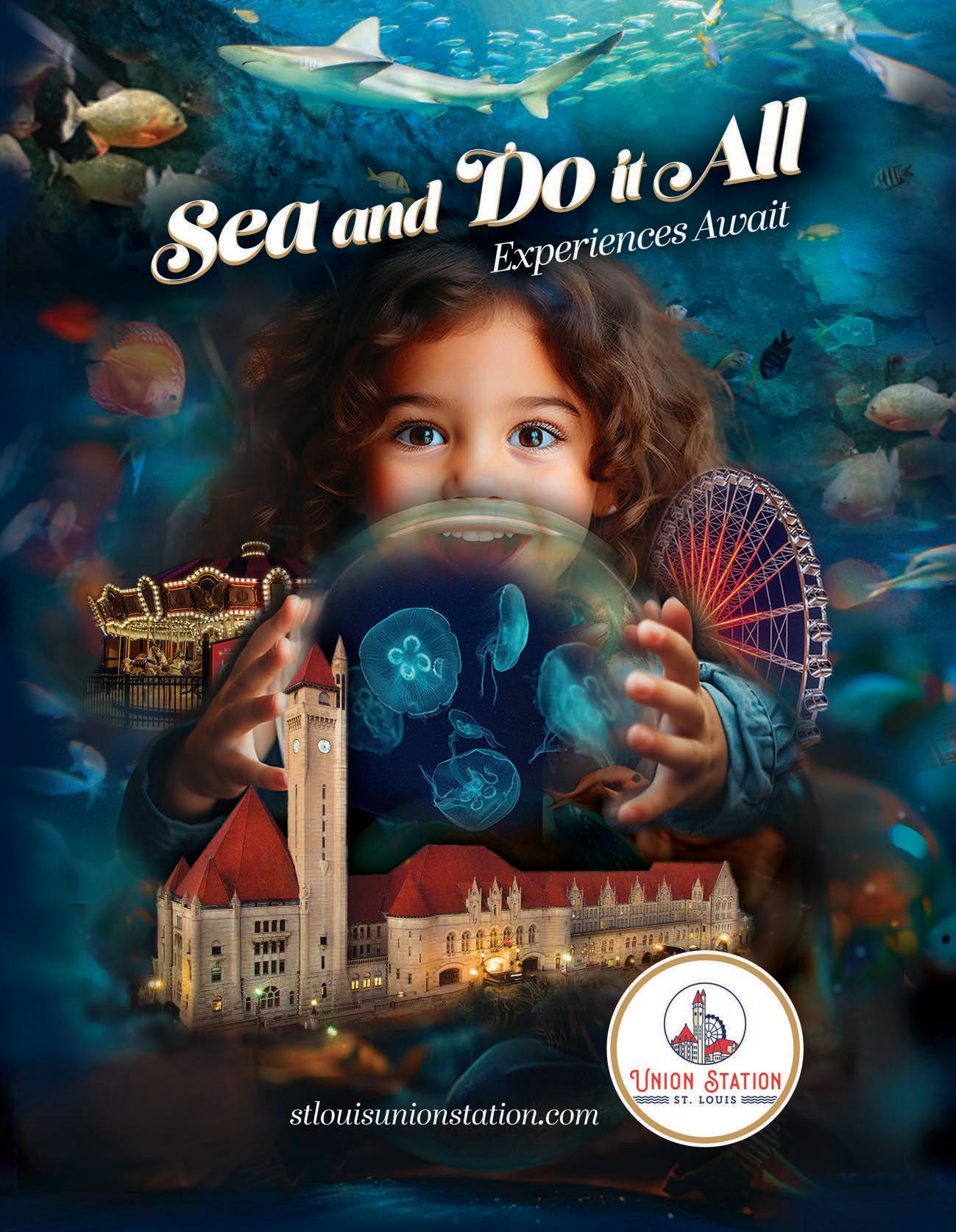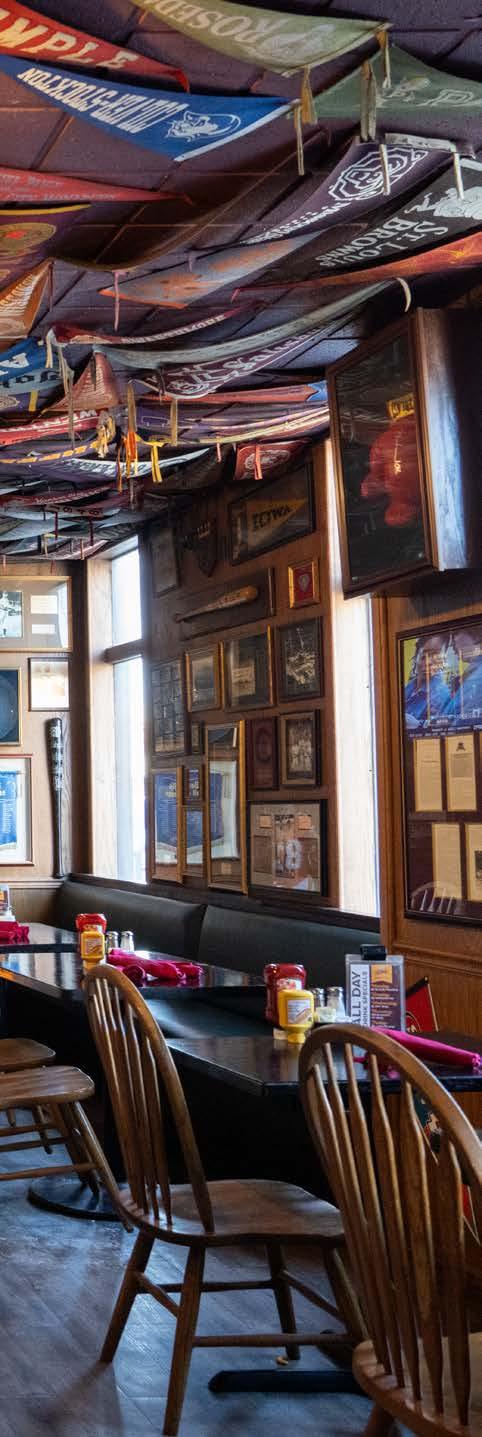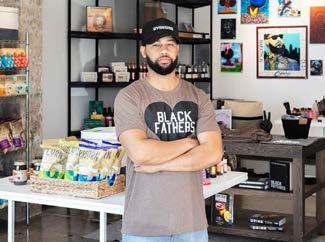


kansascitymag.com





kansascitymag.com


4 Convenient Locations in Johnson County
• AdventHealth Shawnee Mission, 9100 West 74th Street, Merriam
• AdventHealth College Boulevard, 7025 College Boulevard, Overland Park
• AdventHealth Prairie Star, 23401 Prairie Star Parkway, Lenexa
• AdventHealth South Overland Park, 7820 West 165th Street, Overland Park



















There’s something special about a secluded lakeside getaway. Life just feels easier when you’re gazing at the reflections across Table Rock Lake. Rediscover a haven where your to-do list can wait and the whole family can unplug, unwind, and reconnect to what matters. Your escape is just minutes away in the great outdoors at Big Cedar Lodge.










Experience the Ozarks after dark at Top of the Rock’s Nature at Night, now available through spring! Drive your own private golf cart through a 2.5-mile trail featuring stunning light displays, waterfalls, bridge crossings, and a marvelous cave and Bat Bar! Become illuminated with inspiration to conserve our natural world today and forever on this one-of-a-kind spring tour!
advanced tickets recommended : topoftherock . com
@ topoftherockmo


MASTER POET. FEARLESS WARRIOR. ANOINTED KING.
From still waters to shadowed valleys, David’s ascent to the throne is filled with towering giants, wild animals, and Philistine soldiers. After unprecedented victories lead to devastating failures, this passionate warrior will face the biggest battle of all: the one within himself.
With original music inspired by the Psalms, DAVID is a state-of-the-art theatrical experience the whole family will enjoy. Witness one of the most legendary Bible stories as it comes to life with spectacular special effects, massive sets, and live animals during this debut season in Branson, MO.

MARCH – DECEMBER | BRANSON, MO
BOOK DIRECT (800) 377-1277 • SIGHT-SOUND.COM












DID YOU KNOW that at the 1873 Vienna World’s Fair, a wine from Missouri won Best of Show? Yes, it’s true. Before there was Napa, there was Hermann, Missouri.
A group of German immigrants who settled in the lush Missouri River Valley, about 80 miles from St. Louis, discovered that the area had ideal conditions for growing grapes. It was here in 1837 that they founded the town of Hermann, where many decided to pursue grape growing and wine making. By 1848, winemakers were producing 10,000 gallons a year, and by the 1880s, the state of Missouiri was producing 100,000 gallons per year, the most of any state in the country at that time. Hermann’s Stone Hill Winery became the second largest in the nation, shipping a million barrels of wine by the turn of the century. Its wines won awards at the World’s Fairs in Vienna in 1873 and Philadelphia in 1876.
For a while there, the area was known as Missouri’s Rhineland. Later, Italian immigrants also settled in parts of the state and began producing wine.
And just like a true hearty Midwesterner, Missouri’s vines’ robust rootstock are also credited with saving the European

Zach Bauman Photographer
This issue’s roundup of the metro’s best smash burgers was shot by Kansas City based photographer Zach Bauman. A commercial and editorial photographer, Bauman explores his environment through the lens.
wine industry. In the mid-19th century, the phylloxera insect destroyed much of Europe’s grape stock, especially in France. After traditional European varietals were grafted onto the pest-tolerant Missouri native grapes, the stock was sent to Europe, resurrecting the almost destroyed industry. Kansas City and Missouri in general seem to be brimming with oenophiles. It’s been a delight to learn about them through the stories that make up this issue’s main feature. I hope you think so, too.
Cheers!
Dawnya Bartsch EDITOR dawnya@kansascitymag.com


Emma Flannery Writer
Emma Flannery, who wrote this issue’s story about volunteer medical pilots, is a journalism student at the University of Missouri. She has created stories for KCUR 89.3 and written for the Columbia Missourian and the Freedom of the Press Foundation. When she’s not writing, she can be found playing her guitar or at the local record store.

Nina Cherry Arts and Entertainment Editor
Nina Cherry has been writing about music for Kansas City magazine since 2021. More recently, she has taken on a larger role as the magazine’s arts and entertainment editor. In this issue, she wrote about a jazz vocalist and a local clothing designer.

Capture a memory, grab a drink, or check-in so you can check out. There are so many ways to make your day in Springfield, Missouri.









Feedback Say What?

Our story in February’s issue about KC city officials changing the city’s downtown airport’s name solicited a lot of remarks. In order to better market the airport to outsiders and keep it competitive with other regional airports that are adding Kansas City to their names, Mayor Quinton Lucas, along with the rest of the City Council, thought a name change was necessary. What was known as Charles B. Wheeler Downtown Airport is now Kansas City Airport–Wheeler Field.
The downtown airport is the downtown airport.
– Banene Chaney
Honestly, I think about the downtown airport maybe once every 7 years.
– Aaron Cash
I always just knew it as the “the downtown airport” and didn’t even know it had a real name, tbh.
– David King
Rebranding buildings and facilities never works. See Sandstone/the Triangle/Kemper Arena, the Paseo, Sprint Center, Hyatt Regency hotel at Crown Center.
– Colin
Sure. Just like Sandstone will always be Sandstone.
– Megan Baker
They should change it to the Royals new Stadium. – Max Walbridge.
“I’m very deflective of accolades because I don’t think that I earned it. I built the train station that all these wonderful people work in and that’s it. I ring the bell, but they make sure the trains run on time.”
– Jay Sanders, owner of the

Numbers From This Issue
1,000+
The number of football helmets suspended from the ceiling of Chappell’s Restaurant and Sports Museum in North Kansas City.
Page 38
126
The number of wineries in Missouri. Page 50
1995
The year that Angel Flight Central had its inaugural flight. Page 19

Shout Out
A big thanks to longtime Kansas City magazine photographer Jeremey Theron Kirby for heading to the Super Bowl to capture the game and the sights of New Orleans.
469-6700


Behind the Scenes
for this issue’s cover shot about MO wines.








LIKE MOST KIDS , Scott Lauridsen wanted to learn to fly. So he did: In 1997, Lauridsen earned his wings—his pilot’s wings.
A nonprofit with volunteer pilots provides free medical flights for locals in need around
the country
By Emma Flannery
Lauridsen lives in Overland Park with his wife and kids. He worked in sales before he retired, but he always knew he wanted to become a pilot. “It’s something I always wanted to do when I was a kid, and (after having) a family and kids, you finally get the means and time to do it,” Lauridsen says.
But he was looking for a deeper purpose. Lauridsen says flying is a hard hobby to rationalize without a driving factor. It’s expensive and time-consuming. The aviation community is tight-knit, though, Lauridsen says. Most everything spreads through word of mouth, which is how he found out about Angel Flight Central.
(Continued on next page)

(Continued from page 19)
Angel Flight Central is a nonprofit organization that organizes flights for people in need, typically for health-care purposes. It’s headquartered in Kansas City but provides flights for passengers across the country through sister agencies Angel Flight West, Southeast, Northeast and Mid-Atlantic. Volunteer pilots fly families, patients and loved ones across the country to doctor’s appointments, clinical trials and specialized care—all for free. Passengers generally come from more rural areas where specialized medical care is not available. Lauridsen started volunteering with them 10 years ago and hasn’t looked back since.
“The pure joy and satisfaction you get from helping these people, that they’re truly in a tough spot in their life and need some help—you get hooked,” he says.
Katy Horst, who works in operations and development at Angel Flight Central, views the organization as a glimmer of hope for families in situations that seem otherwise hopeless.
“If you think about a patient who was maybe just accepted into a clinical trial that has to be there weekly, three states away, there’s not many people who have the means to do that,” Horst says. “And so what might seem impossible becomes possible once they find out about Angel Flight Central.”
Founder and Chairman Emeritus James H. Stevens, Jr., a retired Kansas City business executive with a passion for flying, started the organization 30 years ago after he flew an eight-year-old boy with a heart abnormality from Kansas City to the Children’s Hospital of Philadelphia for free, where he received a life-saving surgery. The experience inspired Stevens to found Angel Flight Central, then called Wings Over Mid-America.
The organization has grown immensely from that first flight back in 1995. They originally set the goal to fly 12 passengers per year. Today, Angel Flight Central averages about 2,500 free flights per year with a team of over 300 volunteer pilots like Lauridsen, all of whom use their own planes. Typically, pilots fly single-engine planes with room for four to six passengers. All planes must carry a Standard Airworthiness Certificate provided by the Federal Aviation Administration.
For families who need to access care that is further away, Angel Flight Central has partnered with Southwest Airlines to provide vouchers.
For Horst, who was a social worker before joining Angel Flight Central two years ago, what sets this organization apart is how easy it is for people in need to get a flight.
“As a social worker, I’ve worked with so many different organizations that make you jump through a whole lot of hoops and paperwork to get the help that someone might need,” she says. “But as far as Angel Flight Central goes, we don’t ask for financial documentation, race, religion, things like that. We just ask that you’re in need of help.”
Families must provide transportation to and from airports, but Angel Flight Central takes care of the rest for passengers while they’re in the air. Pilots often bond and form meaningful relationships with the families and passengers that they fly.
Sometimes, passengers need to fly once a week or multiple times per month, and pilots become regular fixtures in their passengers’ lives. Lauridsen has flown one pair of siblings to and from a special needs camp once a year for eight years in a row—and has taken pictures of them each flight. Lauridsen has been a mainstay in the lives of these siblings from the ages of seven and eight to the ages of 15 and 16.
He describes the relationship between the passenger and the pilot as one of gratitude.
“All of them are just so appreciative,” he says. “It’s just so overwhelming how thankful they are that you’re doing this for them. I try to explain to them that (they are) doing something for me, too.”
For Lauridsen, his volunteer work at Angel Flight gave him the purpose he had been looking for throughout his years of flying. He just received his 75-mission pin from Angel Flight and has no desire to slow down.
“Pilots have a passion for flying,” he says. “And if you can actually do something with a purpose, it just makes your passion that much more meaningful. I like to tell everybody that I found something where I can combine my passion with a purpose. That’s what Angel Flight does for me.”




























It’s tax time, and for accountants, that means it’s crunch time
THE KANSAS CITY accounting world—along with the nation—is facing significant staffing challenges today, with a dearth of qualified accountants even as well-paying job opportunities grow. With tax season upon us, staffing challenges faced by the accounting industry are even more apparent, says Allison Mott, a certified public accountant and owner of her own Kansas City accounting firm, AM CPA. Mott thinks the accounting world appears dry and uninteresting to the younger workforce and argues that this perception needs to change. Read what Mott has to say.
By The Numbers By Allison Mott
The accounting industry is facing significant challenges today, with a nationwide accountant shortage even as well-paying job opportunities grow. But these challenges may deepen in the coming years unless the industry comes to terms with what is really going on. In my position as an accountant and accounting firm owner, I see that there’s a lot to come to grips with in the industry—and a lot to fix.
According to a recent article in the Wall Street Journal, more than 300,000 U.S. accountants and auditors have left their jobs in the past two years, which represents a 17 percent decline. And although the Bureau of Labor Statistics reports that the number of available jobs in the industry has stayed relatively steady, increasing 4 percent from 2022 to 2023, and the average annual salary of $79,880 seems reasonable, there is still a sense that not enough people are willing or available to fill those openings.
There are fewer students selecting accounting as their major. The number of students earning U.S. postsecondary accounting degrees fell sharply in the 202122 academic year, according to a biennial American Institute of Certified Public Accountants report on trends related to accounting graduation rates, the CPA exam and hiring demand by accounting firms.
Some 47,067 students earned a bachelor’s degree in accounting in the 2021-22 school year, down 7.8 percent from the previous year, according to AICPA’s report.
This shortage is having a dramatic impact on businesses of all shapes and sizes. Accounting firms in particular are having to get creative with the ways they source their talent. This includes outsourcing to other countries and training other majors (such as business majors) to do the work of accountants.
In fact, outsourcing accounting practices ranks right up there with IT as one of the more commonly outsourced business practices, according to TOA Global, an accountant staffing service. Accounting outsourcing countries include the Philippines, India, Vietnam, Brazil and Mexico.
This accountant shortage is heavily impacting the public accounting industry and smaller firms in particular. Larger firms are still struggling to hire but have the discretionary funds to employ full-time recruiters. Smaller firms have to rely on other methods of recruitment. Some have resorted to selling their smaller firms to larger firms that are unable to maintain a work force. Most public company hiring managers for finance and accounting positions say their organizations have
Accounting firms in particular are having to get creative with the ways they source their talent. This includes outsourcing to other countries and training other majors to do the work of accountants.
faced talent retention challenges in the last 12 months (82.4 percent) and expect to experience recruiting difficulties in the year ahead (82.3 percent), according to a recent Deloitte poll. Nearly as many private company hiring managers also report challenges with finance and accounting talent retention (68.9 percent) and attraction (73.7 percent).
Adding to this situation is the fact that a large number of accountants are nearing retirement age. According to The Tax Adviser, a monthly publication of the AICPA, almost 75 percent of the CPA workforce reached retirement age in 2020. The number of baby boomers in the profession who are retiring is certainly set to increase in the next few years as a result of changing staffing models and rapidly changing technology and tax legislation.
Another issue facing the accounting world is the nature of tax season itself. Tax season is a 10-week period from the beginning of February until the middle of April in which the entire nation attempts to file their tax return. This puts additional stress on the already very limited resources of the accounting industry.

The long hours and stress tend to burn out accountants, especially during tax season, and many in the industry leave in search of a better work-life balance. In fact, according to a study by Caba, a resource support organization for the accounting industry, 55 percent of accountants admitted that they were suffering from stress and burnout, compared with 41 percent of employees in other industries, and 79 percent of accountants believe that stress and poor mental health are a problem within the industry. These and other issues in the profession need to be addressed from the ground up. I think that the accounting industry needs a facelift—and fast.
Accounting is seen by students as stale and outdated when in fact there is a wave of New Age accountants taking up market share. The next generation needs to be able to see these opportunities
and envision a future in accounting. Firms need to update their expectations of staff and create an industry that will attract young professionals while at the same time keeping them engaged.
When it comes to tax season, firms need to get innovative on how filing extensions are handled and how preparers can handle their work-life balance during this season of high demand.
If the general public is hoping to find a trusted tax preparer season after season, they will need to ensure their preparer can keep their doors open and remain profitable. Treating tax professionals with patience, grace and respect during tax season is a great way to demonstrate empathy for accountants as they work on the detailed information they need from their clients.
The changes to improve the accounting industry really need to come from all parties involved to ensure that the industry does not miss a beat going forward. It takes a village to raise a family, and it takes an even bigger village to help resolve issues within an industry.


Dorrell was recently named The Governor’s Arts Patron of the Year for Kansas
By Susie Whitfield
ALTHOUGH PAUL DORRELL, the author of Living the Artist’s Life, thinks of himself as a writer, he is most known for his omnipresence in the metro’s art scene.
After graduating from the University of Kansas and spending a decade wandering the world, he came back to Kansas City, got married and founded Leopold Gallery in Brookside in 1991. Dorrell is an art consultant as well as a gallery owner. His clients include Marvel Studios, the Chiefs, the City of Boston, KU Medical Center, the Dallas Arboretum, Miami Freedom Park and 10,000 private collectors nationwide.
In 2006, Dorrell established the Leopold Gallery Educational Foundation to provide inner city teenage artists opportunities. He has also designed art programs for corporations, hospitals and stadiums. “We try to be original, visionary and impassioned,” Dorrell says. “If we’ve failed in that, please don’t tell me.”
This year, the state of Kansas bestowed Dorrell with The Governor’s Arts Patron of the Year Award. According to the Kansas Department of Commerce, the honor is given to “a Kansas native who, based on scrutiny by the Kansas Arts Commission, has generously supported the arts through financial contributions, in-kind donations and dedicated volunteer efforts.”
Let’s get to know Paul Dorrell.
Why were you selected for this award? I’ve spent 34 years tirelessly promoting Kansas artists via my gallery, landing them both commissions and collectors all over the country. When I started out in 1991, very few people took Kansas artists seriously, especially in their own state. Now, Taylor Sheridan (creator of the
“We’ve taken 1,500 teenage artists from the inner city on innovative field trips and seen 900 of them go on to college. I’d like to believe we’ve proven proficient at helping them break the cycle of poverty.”
television series Yellowstone) collects paintings by Phil Epp; Jacob Burmood’s monumental sculpture stands in front of the National Soccer Hall of Fame in Dallas; and Jim Brothers’ statue of Dwight Eisenhower is displayed in Washington, D.C.’s National Statuary Hall.
What gives you the most satisfaction in being a supporter of the arts in Kansas City? I’m extraordinarily proud that my staff and I have been able to make such a big impact not only on Kansas culture but also Kansas City culture. We are bringing revenue to our region—$42 million and counting—and spreading the mission of not just art but also innovation, passion and open-mindedness. Our success has helped raise $300,000 for my educational foundation. We’ve taken 1,500 teenage artists from the inner city on innovative field trips and seen 900 of them go on to college. I’d like to believe we’ve proven proficient at helping them break the cycle of poverty.
What does the future of the arts in KC look like to you? Very bright and full of growth, thanks to so many dedicated individuals like myself—gallery owners, educators, artists, political leaders and philanthropists. When I eventually sell the gallery and spend more time surfing in Tahiti, I’ll look back on our achievements and portfolio with a great deal of pride.
How might this award affect your future? This wonderful award will make our job of promoting Kansas artists easier—something for which I’m quite grateful. Couldn’t have done it without my wonderful staff, my loving family and my wife, Annie.





Lyric Opera of Kansas City to present the world’s first mariachi opera, Cruzar la Cara de la Luna
By Nina Cherry
THIS MONTH, the Lyric Opera of Kansas City is bringing the world’s first mariachi opera, Cruzar la Cara de la Luna, to KC stages. Written by composer José “Pepé” Martínez and librettist Leonard Foglia, the groundbreaking and dynamic work will be directed by the librettist himself.
The one-act opera follows Laurentino, a Mexican immigrant who seeks work in the United States through
the WWII-era Bracero Program—and makes the tough decision to leave his wife and son behind in the process. Decades later, nearing the end of his life, he is forced to confront and make peace with his decisions, as well as fill in the gaps left in his family’s story. Through a multigenerational lens, Cruzar la Cara de la Luna explores themes of sacrifice, unity and the enduring ties of family.
The production will also feature the Grammy Award-winning Mariachi Los Camperos—a renowned Los Angeles-based ensemble founded in 1961—on stage alongside performers. Known for their mastery of the mariachi tradition, the group will bring the opera’s driving score to life.
“Cruzar la Cara de la Luna is about crossing borders, literally and figuratively,” says Deborah Sandler, executive director of Lyric Opera of Kansas City. “It’s a moving, uplifting story about families.”

KC, baby! The KC Current kicks off their first match of the season as they face the Portland Thorns at the scenic CPKC Stadium, the world’s first stadium dedicated solely to women’s sports. The all-star team—which placed fourth last season in the National Women’s Soccer League—is a force to be reckoned with, and KC’s exuberant, sell-out crowds are half the fun. March 15. 11:45 am. CPKC Stadium.
Each spring, pianist Stanislav Ioudenitch—founder and artistic director of Park University’s International Center for Music—is joined by world-class colleagues, friends and protégés for the conservatory’s biggest show of the year. This year’s program, Echoes of Spain, includes a piano arrangement of Maurice Ravel’s Boléro and Manuel de Falla’s Suite Populaire Espagnole Ioudenitch is highly regarded as a champion of the classical world for his 2001 win at the prestigious Van Cliburn International Piano Competition, comparable to the Super Bowl for concert pianists. March 1. 7 pm. Helzberg Hall.
A stunning and vibrant display awaits at Powell Gardens’ Orchid Delirium. Originally launched in 2022, the annual indoor exhibit showcases hundreds of alternating blooms from the garden’s extensive 2,000-piece orchid collection. March 1–April 23. Times vary. Powell Gardens.
Although Grammy Award-winning musician Pierce Freelon’s music is technically for children, the grooving fusion of jazz, soul and hip-hop is captivating for all ages. Family-friendly activities including arts and crafts will begin in Polsky Theater’s lobby an hour before Freelon’s performance. March 8. 11 am. Polsky Theater.
Two of Americana’s finest singer-songwriters, Keb’ Mo’ and Shawn Colvin, come together for a night of storytelling and soul. While each exceptional in their own right, Mo’s blues-influenced stylings and Colvin’s poetically earnest songwriting are even more memorable together. March 11. 7:30 pm. Muriel Kauffman Theatre.
Branford Marsalis
Tenor saxophonist Branford Marsalis carries on the legacy of the famed Marsalis family—often hailed as the “first family of jazz.” The multitalented and versatile instrumentalist, bandleader and composer is known for his bold improvisations and virtuosic playing for a perpetually modern sound. March 15. 7:30 pm. Folly Theater.
Ben Folds
Singer-songwriter and pianist Ben Folds has stylistically stretched his wings since his ’90s and early aughts indie-rock hits like “Bricks” and “Rockin’ the Suburbs.” Now delving into classical-hybrid, Folds blends his pop-rock stylings into works for orchestra and chamber ensembles. Historically a sold-out show, the highly anticipated performance marks Folds’ fifth time performing with the Kansas City Symphony. March 18 & 19. 7 pm. Helzberg Hall.
Author Felipe Torres Medina’s latest book, America, Let Me In, is a sardonic and realistic look into the United States’ immigration process. A staff writer for The Late Show with Stephen Colbert, the Colombian author and comic’s book is based on his own experience immigrating, aiming to make the cumbersome process more accessible and poke a little fun, too. Tickets to the event, presented by Rainy Day Books, include a copy of the book, comedy performance, moderated discussion and book signing from Torres Medina. March 20. 6 pm. The Bird Comedy Theater.
Step into a world of adventure, romance and whimsy as the Kansas City Ballet brings Don Quixote to life. Based on Miguel de Cervantes’ classic novel, the ballet follows the noble Don Quixote and his squire Sancho Panza’s quest, as well as a blossoming love between Kitri and Basilio. Although the lush orchestration has been a long-time labor of
The legendary, 13-time Grammy Award-winning Bonnie Raitt will assuredly bring down the house at The Midland. The singer and slide guitarist transcends genre and generations, weav ing together elements of blues, country, folk and more in beloved hits like “Some thing to Talk About” and “Love Sneakin’ Up On You.” March 16. 7:30 pm. The Midland Theatre.

love for the dance company’s music director Ramona Pansegrau, the production marks the first time the ballet has been performed in KC. March 21–30. Times vary. Muriel Kauffman Theatre.
Soul singer Stephen Day is bringing his retro-pop sensibilities to KC. With wide-ranging influences from Glen Campbell to D’Angelo, the Nashville-based artist is hitting the road in support of his latest album, Gold Mine. March 22. 7 pm. recordBar.
Soul jazz flutist Amber Underwood,
known as Flutienastiness, has been taking KC stages by storm since she was just eight years old. A part of the Vine Street Brewing Company’s Groove Room Jazz Series, Flutienastiness and the Soul Patrol will deliver a tantalizing combination of smooth jazz, R&B and funk. March 28. 6 pm. Vine Street Brewing Company.
Art for the Children is an evening of dancing, food and drink—all for a great cause. Now in its 26th year, the annual Medical Missions Foundation event assists in funding life-saving medical care for children around the world. The night features an auction showcasing works from
renowned artists including David Uhlig and Anthony Oropeza. March 29. 6 pm. Armacost Car Museum, Grandview.
The world-famous Harlem Globetrotters return to KC to flaunt their stunts as they face their rivals, the Washington Generals. A part of their 2025 world tour, the Harlem Globetrotters are celebrating 99 years of expert trickshots. March 29. 2 pm. T-Mobile Center.
Shawn Cullen, artistic director and conductor of the Heartland Men’s Chorus

By Hampton Stevens
KANSAS CITY MAGAZINE sat down with Shawn Cullen, artistic director and conductor of the gay Heartland Men’s Chorus, for a quick Q&A about life, music, the weather and, of course, their new show, Y’all Means All. Yeehaw!
Tell us how you got to Kansas City. I had a full career as a K-12 music educator, and I was an adjunct professor at the University of Arizona, conducting a lot of musical theater. I also had two LGBTQ choruses in Arizona. A buddy who was the conductor said, “You should check out this program (at UMKC) for your doctorate.” I checked it out and I loved it.
What is the best thing about living here? The best thing about living in Kansas City? It’s the seasons. Moving here from the desert, I’ve had to, uh, deal with winter. And I’m still learning how to deal with winter. But I’ve started to acclimate and, man, there’s nothing better than seeing the fall color changes. I grew up in the desert: xeriscapes, cactus, dirt. And to see running water and beautiful trees and color changes is just something that’s really magical.
“The inspiration behind the show was to celebrate country music, which has always had a rich tradition in storytelling, but then utilize the LGBTQ lens to create a more inclusive and diverse experience.”
What do you love most about your job? I love working with people. It kind of sounds kind of a little bit out there, but as a conductor, people are your instrument. I started as a trumpet player and then became a vocalist and transitioned into becoming a conductor. And it’s the people that really become the instrument, which is such a wonderful gift.
When did you know that music would be your career? At a really young age. I didn’t know that I could do anything else. I was always an artsy kid. I grew up dancing in a living room to La Cage aux Folles, my parents not having any clue [that I was gay]. They must have been blind and deaf. That grew into me studying trumpet and being involved in everything possible with music growing up. And I just kind of didn’t see any other option. It’s just, like, this is what I was born to do.
Your parents were supportive, yes? Because this business is so insanely competitive and you have to be the best if you’re going to get the gig, there were times when I thought, Why did I have such amazing, supportive, loving parents growing up? They said, “You can do anything you want, but why not do the thing that you’re most passionate about?” And I love that. But also, during the challenging times, I’ve often looked back and said, “Man, you should have just told me to become a pilot or a doctor.”
Tell us about this show. What is the inspiration behind Y’all Means All? The inspiration behind the show was to celebrate country music, which has always had a rich tradition in storytelling, but then utilize the LGBTQ lens to create a more inclusive and diverse experience.
Can you expand on that? Sure. I mean, country music has been very heteronormative. How many times have we listened to a country song where it’s, you know, love, but we [the gay community] are often translating that and putting ourselves into the place of one part or the other in the song? It’s important that [the gay community] reclaim our space and present country music in a way that’s more inclusive.
Lovely! Yeah. And it’s gonna be fun!







By Nina Cherry
DURING THE HEIGHT of the pandemic in 2020, jazz vocalist Lucy Wijnands graduated from the State University of New York Purchase Conservatory of Music. Despite tirelessly honing her craft during her time in school, Wijnands left feeling directionless and discouraged amid the widespread Covid-19 outbreak.
“I was ready to give up before I even began,” Wijnands says. “It was soul-crushing.”
After graduating, Wijnands moved to Brooklyn and soon found herself immersed in a tight-knit community of jazz musicians. At a time when live music was difficult to find in the city, she discovered Wilson Live—a space she describes as a “playground of music” where musicians could gather and create.
“They inspired me to believe in myself and not give up,” Wijnands says.
As the pandemic subsided, Wijnands’ career ultimately began to take off. In 2021, the singer took home first place at the prestigious Ella Fitzgerald Jazz Vocal Competition.
But Wijnands’ immersion in music started long before her professional career. Raised in a musical family, she grew up surrounded by jazz. She was often toted along to gigs by her father, KC stride piano player Bram Wijnands.
“I would always crawl up on the stage and wanted to be a part of it,” she says.
In middle school, she began spending nearly every Saturday watching her dad perform at The Majestic. Before long, she started sitting in with him, finding her footing onstage.
“I looked up to him,” Wijnands says. “I adored him so much.”
Soon after, Wijnands moved to New York with her mom and twin sister. The cross-country relocation hit her hard, but she found solace when she began taking her first voice lessons with NYC vocal legend Anne Phillips.
“From there, everything just came into place,” Wijnands says.
Now, the singer will return to KC for a special father-daughter performance alongside the Kansas City Jazz Orchestra on March 1. Wijnands’ vintage, crystal-clear voice will be backed by a robust big band to deliver a heartwarming evening of jazz standards and show tunes at the Folly Theater. The duo will also perform sans big band at Midtown’s Upcycle Piano Craft on March 4 for a free happy hour show.
Later this month, Wijnands is set to spend more time with her dad—this time in the studio working on a live album, where she’ll invite a small audience. She’s still finalizing the tracklist, but she hopes to record a total of 20 songs, including jazz standards, songs from musicals and a few originals.
Among the songs, Wijnands will pay homage to her hometown, featuring bluesy, boogie-woogie tunes from the early days of Kansas City jazz—including compositions from Jay McShann and Jimmy Witherspoon The album, her first since her 2023 debut Something Awaits, is slated for release later this spring. Wijnands, who’s also a visual artist, plans to design the album cover, too.
“Part of why I want to record with my dad is because I really want to honor what we’re doing,” Wijnands says. “I want to honor him, but I also want to explore what else I can do.”
↓
GO:
“Always and Forever” featuring Lucy and Bram Wijnands. Saturday, March 1, 7 pm. Folly Theater, 300 W. 12th St., KCMO. Tickets range from $28 to $80 and are available at follytheater.org.
Lucy and Bram Wijnands. Tuesday, March 4, 4:30 pm. Upcycle Piano Craft, 3945 Main St., KCMO.














By Nina Cherry
SOME OF KC fashion designer Whitney Manney’s best work comes from designing with herself in mind. Her bold denim and cord overalls are no exception. Hand-dyed corduroy, denim and faux suede come together in this playful patchwork design.
“When I started sewing, I started sewing with scraps— making something out of nothing,” Manney says. “I like to have fun with different textures.”
The overalls’ adjustable straps ensure a customized fit,
and the wide-leg silhouette channels a ’70s vibe but with a modern twist. But the most prized feature? Roomy pockets.
Whether dressed up for a night out or styled casually for a day on the go, this jumpsuit is ideal for layering and versatile enough for KC’s unpredictable March weather. Equal parts stylish and functional, these overalls embody Midwestern couture.
At just under $200, this one-of-a-kind, slow fashion piece is built to last for years—if not decades.
↓ Check out her designs at whitneymanney.com.
“Even though a lot of my designs are colorful and have a big voice, utility and modification are such common themes in my work,” Manney says. “I think that’s the Midwest girly in me. It’s just natural.”

By Susan Cannon
LITTLE DID DeAnna Skedel know that when she took a temporary teaching job at the Kansas City Art Institute in 2002, she and her husband, Victor, would decide to make the city their home.
Skedel, a multimedia artist, came to KC to teach at KCAI on the heels of extensive art studies. She has made a career for herself in the art world, and teaching at KCAI is a big part of that.
Growing up in Cleveland, Skedel was a curious and observant young girl. Her early fascination with pareidolia and nature has shaped her artistic path, she says. Much of her early childhood proclivities can be seen in her eco-print collage artwork today. Organic elements are the basis of her art, with the use of contrasting collaged hands, arms and fragmented garments. Being an academic and a parent of neurodiverse teenagers, she spends a lot of time thinking about nonverbal communication as she helps her students and children navigate life’s evolving social concerns.
Skedel has received international accolades as well, with notable projects such as the US/UK Contemporary Cast Iron Sculpture Project in England, Overflow: Fluids at the Getty Museum in L.A. and a native garden project in Voulx, France. She also contributed to the book The Sixth Surface: Steven Holl Lights the Nelson-Atkins Museum in 2007. Skedel is currently an artist-in-residence at Englewood Arts in Independence, Missouri.
Here’s what Skedel has to say about her work.
What kind of art did you make early on? My undergraduate degree is in metalsmithing, beginning at the Cleveland Institute of Art, then finishing at the University of Akron in a fabulous program specializing in color on metal, specifically anodizing. I was particularly interested in electroforming (chemically growing metal on organic forms). The more that I worked in these materials, the more that I began to look deeper at the environments where the things I was attracted to came from.
What led you to Kansas City? When I finished graduate school (with an MFA in sculpture) at the School of the Art Institute of Chicago, I realized I wanted to teach and that I loved the idea of creative problem solving that happens in first-year foundation art and design programs. I studied these programs and their history as an undergrad. (The Cleveland Institute of Art originally had faculty from the Bauhaus, and there is a whole post-war lineage of art department development there.) Then, with an opportunity to work at the Rochester Institute of Technology in their foundation program, I learned that KCAI was one of the original foundation studies institutions and that most of the people who started the program were still teaching there. So when a job opened up, I was excited to come to KC and work with that group of faculty.
Why did you choose to merge eco-printing with collaged body parts? Eco-print has been something I’ve always loved noticing in my environment. When I was young, my dad would get frustrated that fallen leaves and pine needles would stain our driveway and sidewalks. I thought it was cool how the stains would look like other things to me. Years later, I began to play with my eco-printing being looser and more stacked, hoping to get these surprising images where new figures, movement, and twists and turns appear. When I add the collage parts to those twists and turns, I feel like it finishes them. The collage parts make visible what I sometimes feel is invisible in myself.
Skedel’s work is showing now at the InterUrban ArtHouse (8001 Newton St., Overland Park) in the Her Art, Their Art exhibition through March 21. She will also have works at HOK (300 W. 22nd St., KCMO), an engineering and design firm, from March through September 2025. Learn more via Instagram @deannaskedel.

L oc ated on t he b a nks of t he Finl e y R iv er in Ozar k, Mis s ouri, Finl e y Far ms is restoring an d reim a gining t he hi storic Ozar k Mill p roper t y to create a sp rawling natu re -b a sed gat herin g pl a ce and far m- forward dining de s tin a tio n . Initi all y built in 1 83 3 and p rese rv ed wi t h care, The Ozar k Mill se rv es a s t he hea r t of Fi nle y Fa rm s . Inside, you’ ll find tw o r iv erfron t restauran ts , a cha rming g ene ra l store a nd vib rant ev ent sp a ces th at spe a k to th e true spiri t of t he Oza rks . Pl a n y ou r visit n ow and look forward to e xplo rin g t he urb a n fa rm, c of fee sho p, sceni c wa lkin g t ra ils a nd b ey ond .





Sports Bar? Or Sports Museum?
Chappell’s is definitely both, serving up beefy hamburgers with a side of nostalgia
By Hampton Stevens
THERE ARE TWO ways to get a Heisman Trophy. One way is to be born with one-in-a-million athletic talent, play youth sports, attend a high school with a great football program, be recruited to attend a premier FCS university, avoid getting injured and outshine hundreds of other phenomenal athletes over the course of your college career.
Or you can be Jim Chappell. ☞

If you are Chappell, it’s easy. A sports memorabilia dealer in New York City will call you up and offer a Heisman Trophy for sale. That’s how Chappell’s Restaurant and Sports Museum, north of the river, came to have a Heisman that once belonged to Packer legend Paul Hornung.
But that’s nothing. The most coveted statue in college sports is just a tiny part of Chappell’s truly vast collection. There’s an astonishing array of pictures, posters, pennants and assorted objects d’sport covering every single square inch of the bar’s walls and ceilings. Even the bathrooms have thematically appropriate treasures.
On a frigid afternoon, by the cozy fireplace, Chappell told me how his sports shrine came to be. He grew up in Ohio, went to Drury University in Springfield, Missouri, and moved to KC in the late 60s, going into the insurance business. In 1985, he decided to start a restaurant.
“It started out as Chappell’s Bar and Grill,” he says. “Then it became Chappell’s Restaurant and Lounge. Then it became Chappell’s Restaurant and Sports Museum.”
“What makes it a museum?” I ask.
“Because it’s got museum-quality artifacts in here,” he says. “It’s one of the top sports restaurants for memorabilia in the country.”

He isn’t lying. The restaurant houses one of the finest collections in the country, lauded in publications like USA Today and Sports Illustrated
“I didn’t want it to just be a rum-dum sports bar,” Chappell says. “I wanted some quality stuff in there. So I went through my scrapbooks. I went to the professional players, football, baseball players that I knew and collected stuff and got some vintage stuff.”
That “some vintage stuff” became something incred-
“I went to the professional players, football, baseball players that I knew and collected stuff and got some vintage stuff.”


The football helmets are an especially big draw. “I’ve got a thousand helmets,” Chappell says.
They cover every inch of the ceilings, with virtually every college team in existence represented. Name a school and Chappell, remarkably, can probably take you right to their helmet and maybe even share a tale or two about the team it represents.
ible, collected over the course of nearly 40 years. You can see an autographed Michael Jordan jersey from the Olympics, a World Series trophy, a Lombardi trophy, Roberto Clemente’s Gold Glove and a glass case filled with autographed baseballs, including a bunch of Hall of Famers. There’s Tom Watson’s putter and signed photos of Jackie Robinson, Joe DiMaggio, Satchel Paige and Billie Jean King. On and on. It’s a remarkable place.
Sharing tales is, after all, kind of his jam. These days, he’s sort of owner emeritus, having sold the restaurant to an investor. Chappell is still there almost every day, though. A raconteur extraordinaire, you can find him laughing, chatting and telling stories about his incredible collection. Enshrined into the Missouri Sports Hall of Fame, Class of 2013, he’s even co-written a book, Conversations at Chappell’s, and is currently working on a second tome.
The whole collection is worth millions to be sure, but money isn’t what matters. There is, quite simply, a radiance there—a sense of being in the presence of greatness, even if it’s just a wisp. Walking around the place, staring at the walls, you know that Muhammad Ali or Lou Gehrig, say, touched these objects. There’s an undeniable power to that, an energy that every sports fan can understand.
Just ask Chappell. He’ll tell you all about it.




Before Prohibition, Missouiri’s winemaking industry was one of the largest in the country, producing 100,000 gallons a year. In 1873, one of the state’s wines won Best of Show at the Vienna World’s Fair. Although the state’s winemaking capabilities are much less now, its wine scene is flourishing.
By Dawnya Bartsch, Ryan Reed, Ian Ritter, and Tyler Shane





TerraVox is more than just a winery— it’s a living museum
By Dawnya Bartsch
N INTERACTIVE MUSEUM exhibition might be the best way to describe TerraVox Winery. That’s not surprising considering it’s the brainchild of museum designer Jerry Eisterhold, who almost 30 years ago decided to resurrect America’s forgotten grape varietals and create his Kansas City vineyard near Weston, not far from the airport.
Eisterhold became interested in indigenous American grapes after reading a 1909 book by Thomas Volney Munson chronicling mid-America’s native grapes. Munson is credited with saving Europe’s traditional grape varieties from the continent’s late-1800s
phylloxera epidemic. Known as the Great French Wine Blight, the pest invasion nearly destroyed France’s wine business. Munson grafted European varietals onto Missouri rootstock, which was immune to the pest. Munson and others—most notably Missouri’s state entomologist at the time, Charles Riley—sent the rootstock to vintners in France.
Many of the grape species noted by Munson have been lost to time, trends and Prohibition. In 1920, when prohibition hit, Missouri was the second largest wine-producing state in the country, second only to Ohio, but the Show Me State never quite recovered (Continued on next page)

(Continued from Page 47)
from the nation’s alcohol ban. Munson’s work can be seen as the philosophical foundation of TerraVox Winery. After reading Munson’s book, Eisterhold, who grew up on a Missouri farm and studied agronomy in college before becoming a museum designer, embarked on a mission to collect heritage grape seeds and restore the old varieties.
“We are a living, breathing museum,” says Jean-Louis Horvilleur, TerraVox’s winemaker and vineyard manager. Horvilleur, who moved from Texas about five years ago to oversee TerraVox—which means “voice of the land” in Latin—had heard about Eisterhold’s vineyard through business associates and wanted to be a part of his grand experiment. “The grapes here don’t really exist anywhere else,” Horvilleur says.
Making wines from these grapes is a challenge because there is no written record about how to go about it, but that’s also the fun and gratifying part of the process, Horvilleur says.
There is a “little bit of a Wild West approach” to working with relatively unknown grape varietals, Horvilleur says. “We love to experiment. We are constantly learning about the grapes, learning their characteristics.”
They grow Missouri’s state grape, the Norton, of course, but they also grow Cloeta, Albanian and Herbemont, among other obscure varietals that most people have never heard of.
It’s these varietals that TerraVox is always looking to craft into bottles of fine wine.
Since purchasing the 85-acre plot of land in 1996, Eisterhold has grown the vineyard and business. TerraVox now has a tasting

room and hosts wine tastings and seasonal events, with plans to open a wine bar this spring.
“We’re always looking for ways to introduce the community to the winery and wines,” says Horvilleur.
For example, right now TerraVox is offering an “igloo experience” through the end of March. Each clear igloo is set out on an outdoor deck, customized with a heating apparatus, and seating, blankets, and decorated for an experience to remember. A bottle of wine and a charcuterie board are included in the reservation.
Another example is TerraVox’s spring wine run. The 5K run/ walk takes guests along a trail that winds through the vineyard, culminating with a wine pour at the finish line.
To learn more, check out terravox.wine.

Little do most oenophiles know that America’s first official wine region was right here in Missouri
By Ryan Reed
Forty miles west of St. Louis is the home of the first recognized American Viticultural Area—Augusta, Missouri. Established in 1980 through the Bureau of Alcohol, Tobacco and Firearms, American Viticultural Areas were created to legitimize the production and labeling of wines from specific regions. Now overseen by the Alcohol and Tobacco Tax and Trade Bureau, there are 274 AVAs in 34 states, over half of which are in California.
Missouri—once home to the second largest wine-producing region in the country—and the Augusta AVA have a storied history. Missouri’s oldest winery, Mount Pleasant Estates, was founded in 1859 to take advantage of the area’s abundant and rich grape harvest. In the 1870s, Missouri’s state entomologist, Charles Riley, saved the French wine industry with the help of Augusta vintners by grafting native phylloxera-resistant rootstock with French vine cuttings. For his contribution, a statue of Riley was erected in Montpellier, France. Surviving the financial hardships of Prohibition, the Augusta AVA has steadily climbed back and is still investing in wine tourism in the region.
AVA certification is quite a technical thing. It keeps winemakers honest when claiming where grapes are grown. This protects winemakers who produce in a specific region from less noble ventures that may intend to sell more wine using cheaper methods and ingredients by claiming they were made elsewhere. This geographic certification can bestow a pedigree on wines for enthusiasts seeking bottles from specific locations, such as the Willamette Valley in Oregon and Sonoma County in California. To be labeled from a specific AVA, 85 percent of the grapes must be grown in it, and the wine must be completely finished in the state. Similar certifications exist abroad such as in France (appellation d’origine contrôlée) and Italy (denominazione di origine controllata).


By Ian Ritter
F YOU’RE LOOKING to get away and spend some time drinking wine in a rural setting and California and France aren’t in the budget right now, why not check out Missouri’s vineyards?
The state boasts 126 wineries, and while Missouri’s vintners might not have the same cache attached to them as those in more exotic locales, you’ll find a rich history of winemaking that predates the Civil War.
The state of Missouri takes wine production and sipping seriously—it operates a wine and grape program simply called “Missouri Wines” through its Department of Agriculture. In 1980, the area around Augusta near the Missouri River, just west of St. Louis, was designated the first American Viticultural Area in the United States, beating out California’s Napa Valley.
It was the area’s first European settlers in the mid-1800s that kickstarted the state’s winemaking industry. Newly arrived Germans opened the first wineries around the Hermann area along an extremely fertile part of the Missouri River Basin.
Italian immigrants in the 1890s did the same in St. James, in the south-central Ozark Highlands part of the state, producing their own distinct wines. Meanwhile, the Missouri wine industry in the 1870s is credited with saving production in France by sending the country rootstock that was immune to the insect that had destroyed much of France’s vineyards in what is known as the Great French Wine Blight.
Now, there are five AVA designations around the state: Augusta, Hermann, the Ozark Highlands, Loess Hills District (in the northwest part of the state) and the Ozark Mountains.
Additionally, nine different grapes are grown in these regions, all with different characteristics, including Catawba, Chambourcin, Chardonel, Concord, Norton, Seyval Blanc, Traminette, Vidal Blanc and Vignoles.
Missouri Wines promotes eight wine “trails” that could serve as weekend-long getaways or shorter trips for Kansas Citians, and there is even a metro-area trail for those pressed for time.
(Continued on Page 52)
Along with having the distinct honor of holding the nation’s first American Viticultural Area, the state can claim five other AVAs. An AVA is a specific type of appellation of origin used on wine labels. AVA boundaries are defined and granted by the Bureau of Alcohol, Tobacco and Firearms. At least 85 percent of the grapes that make up a wine must be grown within the boundaries of an AVA for vintners to claim it on their labels.
By Ian Ritter
→ OZARK MOUNTAIN
Recognized in 1986
3.5 million acres in southern Missouri Sixth largest AVA in the United States. This AVA encompasses many of the state’s smaller AVAs listed here.
→ HERMANN
Recognized in 1983
51,200 acres from St. Louis to Jefferson City German settlers began planting in the 1830s.
→ OZARK HIGHLANDS
Recognized in 1987
1.28 million acres in south-central Missouri, including St. James Growers began planting grapes in the 1870s.
→ LOESS HILLS DISTRICT
Recognized in 2016
12,897 square miles of hills in northwestern Missouri
This area includes the rolling hills near the Missouri and Big Sioux rivers in the northwest part of the state and the Ozark Mountains.
Source: The Missouri Wines organization

Amtrak trips are a popular way to get to Hermann, a town with outsized German roots about a four-hour drive away from KC. Tourists get a big willkommen right off the bat at the train station and visitor information center.
Guests can choose from several historic inns and bed-and-breakfast-type lodgings as a headquarters from which to visit winery tasting rooms and restaurants that are touted as being “in walking distance of each other.”
Missouri’s oldest wine community features several stops on the trail, including Adam Puchta Winery, Curling Vine Winery, G. Husmann Wine Company, Hermannhof Winery, Reserve Cellars of Hermann and Röbller Vineyard.
Hermann hosts several festivals and food-pairing events throughout the year, like the Farmers’ Table Wine Trail, the Wild Bacon Wine Trail and the Berries and BarBQ Wine Trail. In June, there is the Hermann Plein Air festival, where artists of all skill levels can paint landscapes on plots of pre-approved farmland.

The Lake of the Ozarks Wine Trail offers travelers vineyard experiences a world away from sipping the grape out of a Solo cup in Party Cove.
Dale Hollow Winery in Stover, north of the lake, is open from February through December and has a live music stage in the summer. Seven Springs Winery in Linn Creek, just south of the lake, features a busy live music calendar.
Meanwhile, Shawnee Bluff Winery and Vineyard has two options for visitors—a location on the water by Bagnell Dam at Lake Ozark and the actual Shawnee Bluff Vineyard in Eldon, a town legendary KC saxophonist Charlie Parker used as a quiet retreat to fine-tune his playing.

You don’t have to travel across the state to visit a vineyard. The Kansas City area has its own wine trail with several stops along a loop that spans from the West Bottoms to Waverly in Lafayette County.
Several wineries make up the 70-mile KC trail, which features wineries not far from both U.S. Route 24 and Interstate 70. Farthest to the east is Baltimore Bend Vineyard in Waverly, which was founded in 1997 and offers several varietals. About 10 miles west, toward downtown KCMO, is Terre Beau Winery in Dover, with a tasting room housed in a former chapel from the 1800s.
In Independence, in a rural area along the Little Blue River valley, there is the Albonée Country Inn and Vineyards. If you travel south a little over 10 miles, past lakes Blue Springs and Jacomo, Stonehaus Farms Winery grows several wines in rural Lee’s Summit. Further east on Interstate 70 lies Arcadian Moon in Higginsville, and the Odessa Country Winery is just north of the Powell Gardens botanical garden.
Those looking to stay inside the city limits can head to Amigoni Urban Winery in the West Bottoms, which uses grapes grown in Centerview, Missouri.


Flowing from south-central Missouri’s Dent County before dumping into the Mississippi River, the windy Meramec wanders along Interstate 44, as do its nearby wineries. This area roughly between the towns of St. James and Mexico near the Ozark Highlands is where Italian immigrants grew Missouri grapes.
St. James Winery, founded in 1970, is one of two in the city and is known as the state’s largest vineyard. Prairie Barn Winery & Christmas Tree Farm is a five-minute drive to the north, where you can grab a Norway Spruce with your bottle of red.
A bit further to the east, in a St. James-area estate known as Rosati, is Eagles’ Landing, which partners with local vineyards to make its wines. About a 50-mile drive to the southeast, you will find Peaceful Bend Winery in Steeltown near the Meramec.

If you find yourself in southeast Missouri near the country’s second longest river, you’ll also find two wineries.
Located between the Mississippi and Interstate 55 is Hemman Winery in Brazeau, which bills itself as “possibly Missouri’s Happiest Little Winery.”
Apple Creek Vineyard and Winery sits close to I-55 in Friedheim. Founded in 2006, the winery’s tasting room overlooking the Mississippi tributary Apple Creek opened in 2012.
(Continued on Page 54)

on Interstate 70 lies Arcadian Moon in Higginsville, and the Odessa Country Winery is just north of the Powell Gardens botanical garden. Those looking to stay inside the city limits can head to Amigoni Urban Winery in the West Bottoms, which uses grapes grown in Centerview, Missouri.
Vintage ’78’s wine list wins global recognition
By Ryan Reed
The Lake of the Ozarks Wine Trail offers travelers vineyard experiences a world away from sipping the grape out of a Solo cup in Party Cove.
Overland Park’s wine bar extraordinaire Vintage ’78 is gaining international attention and garnering top accolades from oenophiles across the globe.
Dale Hollow Winery, north of the lake in Stover, is open from February through December and has a live music stage in the summer. Seven Springs Winery in Linn Creek, just south of the lake, features a busy live music calendar.
Last September, Overland Park’s Vintage ’78 Wine Bar won Best Wine by the Glass List (without Coravin) in the World at the World of Fine Wine Magazine’s World’s Best Wine Lists Awards. The “without Coravin” designation is significant, as Coravin is a pricey technology that extends the quality of an opened bottle for up to four weeks.
Maintaining an award-winning list serving wine by the glass without this technology displays top-tier attention, consideration and service.
Meanwhile, Shawnee Bluff Winery & Vineyard has two options for visitors—a location on the water by Bagnell Dam at Lake Ozark and the actual Shawnee Bluff Vineyard in Eldon, a town legendary KC saxophonist Charlie Parker used as a quiet retreat to fine-tune his playing.
Vintage ’78 is owned by Michael Scherzberg and managed by Megan Downes with head chef Kyle Ketchum. The three worked together for years at other establishments before venturing out on their own. Vintage ’78 prides itself on taking guests on a journey, offering clientele the best of the best and unique wine finds from their award-winning wine list. Wine is served in a variety of accommodating sizes, such as a 1 oz taste, 2 oz half-glass, 5 oz full glass or a full bottle.
Flowing from south-central Missouri’s Dent County before dumping into the Mississippi River, the windy Meramec wanders along Interstate 44, as do its nearby wineries. This area, roughly between the towns of St. James and Mexico near the Ozark Highlands, is where Italian immigrants grew Missouri grapes.
This prestigious honor placed Vintage ’78 on the global scene alongside Michelin-starred establishments run by illustrious names like Gordon Ramsay. Vintage ’78 bested other regional winners from across the globe in this category.
“We are amazed and deeply honored to receive this global award from The World’s Best Wine Lists,” says Scherzberg. “This recognition reflects our unwavering commitment to curating an outstanding wine selection and providing an unparalleled dining experience for our guests.”
St. James Winery, founded in 1970, is one of two in the city and is known as the state’s largest vineyard. Prairie Barn Winery & Christmas Tree Farm is a five-minute drive to the north, where you can grab a Norway Spruce with your bottle of red.

The Northwest Missouri Wine Trail focuses on several wineries north of Kansas City, in an area that reaches from Weston to Excelsior Springs.
Windy Wine Company in Osborn is a little over an hour’s drive north, off U.S. Route 36, and features a corn maze. Toward the southwest near Weston and the Missouri River is Riverwood Winery, which offers regular live entertainment and a whiskey bar.
Speaking of historic downtown Weston, Pirtle Winery, founded in 1978, offers a tasting room among the area’s other small businesses. Jowler Creek Vineyard and Winery is about 10 miles east, in Platte City, and sports a varied events calendar. TerraVox Winery is still in KCMO city limits, with a vineyard just north of Parkville between the Missouri River and KCI.
Over on the Northland’s eastern side in Liberty is Belvoir Winery and Inn, with an attached hotel converted from a former 1800s compound for the charitable Odd Fellows fraternal order.
Excelsior Springs, known for its historic Elms resort, is home to Fence Stile Vineyards, Winery and Distillery, which features a wine cave, and Shamrock Hills Vineyard and Winery, which opened in 2023 on 323 acres.

In the northern part of the state, hugging the Iowa border, is the Winestein Trail, consisting of two wineries 90 miles apart, with Bethany as the center point.
Backyard Vine and Wine is to the west, in Maryville, home of Northwest Missouri State University. It opened in 2008 and has seven varieties on its five acres. Just under 100 miles to the east in the Green Hills area of the state, in Trenton, is Black Silo Winery. It’s open from April 20 to December 22 and hosts special events.

The Ozark Mountain Wine Trail spans a wide stretch of Southwest Missouri, from the Kansas border to Springfield to the Table Rock Lake area.
North of Springfield, you’ll find 7C’s Winery in Walnut Grove, which offers wines made with Missouri grapes as well as the honey-derived libation mead. Tyler Ridge Vineyard Winery is in the northern part of Springfield and features a tasting room in a refurbished 1905 barn.
About 20 miles north of Joplin on the Kansas border is Keltoi Winery, located on 43 acres in Oronogo, established in 1997. Just south in Webb City is Christine’s Vineyard, and the winemaker also operates the Vino Noir Wine Bar in downtown Joplin.
Lindwedel Winery is among Branson’s several entertainment attractions and is open most weekends.


↑ ROMAIN MONNOYEUR’S DOMAINE DÉSIRÉ PETIT
Although KC isn’t exactly known for rolling hills of vineyards, we aren’t short on wine lovers and experts. A few of them have even started their own labels and sell them throughout the metro. Here are four labels created by local wine aficionados and connoisseurs.
By Tyler Shane
Chef and France native Romain Monnoyeur may not have his own wine label, but his family does, and his restaurant, Westport Cafe, is the only place in the U.S. that sells it.
Domaine Désiré Petit was founded in 1932 by Monnoyeur’s great-grandfather Désiré Petit. With vineyards in Pupillin, the renowned winemaking village in the Jura region of France, Domaine Désiré Petit has since been passed down to Monnoyeur’s uncles Gérard and Marcel.
To buy a bottle or try a glass with your meal, head to Westport Cafe. Right now, you can try Domaine Désiré Petit’s poulsard (a light red wine), crémant blanc (a sparkling wine) and crémant rosé (a sparkling rosé). Not sure what to order with your meal? Just ask the server and they will be more than happy to help you pair a Domaine Désiré Petit wine with your food.



← KIRK AND JULIE BERGGREN’S KC WINE CO.
When the Berggren family bought farmland in Olathe, they had every intention to turn it into a pumpkin patch. The property was already home to a small vineyard, however, and with some convincing from their daughter Taylor, the Berggrens decided to capitalize on that and go full-force into winemaking (they did end up dedicating a portion of the land as a pumpkin patch, too). KC Wine Co.’s winery and vineyard makes for a great day trip. Head there and you’ll be able to try one of their 14 bottled wines, from a smooth and bright French-inspired seyval blanc to a red wine made with the Norton grape variety, the official grape of Missouri.
← DOUG FROST’S ECHOLANDS WINERY
Doug Frost is kind of a big deal. Based in Kansas City, Frost is the one of three people in the world to hold both a Master of Wine and Master Sommelier title. He’s also an author and wine consultant. So it’s about time the wine expert started making his own vino.
Last year, Frost and his business partner, fellow Kansas Citian Brad Bergman, finally opened Echolands Winery in Walla Walla, Washington. On regular rotation are a syrah, bordeaux-style red blend and another red blend made from the neighboring Seven Hills Winery. Although the label has yet to make its way to KC, you can learn more about Frost’s winery and purchase bottles on the Echolands Winery’s website (echolandswinery.com).
← WHITNEY VINZANT’S VINZANT WINES
Located in northern Sonoma Valley is a 63-acre vineyard owned by local restaurant group owner Whitney VinZant. George Vineyard, named after VinZant’s son, currently produces four wines under the VinZant label: a riesling, a rosé, a red blend and a cabernet sauvignon. Any one of these wines can be tried at several of VinZant’s restaurants, but you’re sure to find them at Gram and Dun on the Country Club Plaza. You can also find the label at your local liquor store.

For those not versed in the nine grape varietals grown in Missouri, here they are By Ian Ritter
→ CATAWBA
Pink and rosé wines
Semi-sweet to sweet
North American hybrid red grape
5.6 percent of grapes grown in Mo.
→ CHAMBOURCIN
Red wines
Dry to semi-dry
French-American hybrid red grape
11.5 percent of grapes grown in Mo.
→ CHARDONEL
White wines
Dry
Cross between seyval blanc and chardonnay grapes
3.9 percent of grapes grown in Mo.
→ CONCORD
Red wines
Sweet
Originated in Concord, Mass.
6.6 percent of grapes grown in Mo.
→ NORTON
Red wines
Dry
Official Missouri State grape, first found near Richmond, Va., in 1835
17.7 percent of grapes grown in Mo.
→ SEYVAL BLANC
White wines
Dry to semi-dry
French-American hybrid grape
2.5 percent of grapes grown in Mo.
→ TRAMINETTE
White wines
Dry to semi-sweet
American child of the German Gewürztraminer grape
5 percent of grapes grown in Mo.
→ VIDAL BLANC
White dessert or sparkling wine
Dry or semi-dry
French-American hybrid since the 1930s
8.2 percent of grapes grown in Mo.
→ VIGNOLES
White wines
Dry to sweet
Versatile French-American hybrid 15.5 percent of grapes grown in Mo.
Source: The Missouri Wines organization

By Tyler Shane
ET’S BE REAL: W hile many of us love and appreciate a glass of wine with our meal, shopping for a bottle or ordering a glass at a restaurant can feel intimidating. What’s the protocol for when the server pours you a sample of wine at a restaurant? What’s the deal with orange wine? What pairs well with spicy Thai food?
We asked Richard Garcia, owner of the Crossroads’ Big Mood Natural Wines, and Sarah Hogan, director of beverage and hospitality at Earl’s Premier and Bacaro Primo, to lend us some words of expertise.
Tips when picking a wine: Garcia: Personally, I think sticking to rigid rules about pairing white wines with only lighter fare and reds with heartier meals is no longer relevant. Drink what you typically enjoy with your meal.
Hogan: Don’t be afraid to try something new. Show me something from the island of Corsica or made from a difficult-to-pro nounce Italian variety I have never seen listed and I’m hooked. These lesser-known wines can also often be of great value compared to some of their more famous counterparts.
Tips on pairing your wine: Garcia: As a general rule, avoid super tannic wines when enjoying spicy foods. Instead, try an aromatic white wine that has a little residual sugar, like a riesling, muscat,
Gewürztraminer or a juicy, lighter-bodied red wine like a pinot noir, gamay, zweigelt, or schiava. Sparkling wines like pét-nats, Cava, Prosecco and Champagne are considered cheat codes when it comes to food pairings. They can be paired with almost anything.
Hogan: At Earl’s Premier, we are known for our incredible oyster selection. Whether it’s a crisp class of Muscadet to pair with a briny East Coast oyster or a full-bodied Champagne to pair with a plump West Coast oyster, it’s hard to go wrong (but I recommend staying away from big reds). Down the street at Bacaro Primo, we are popping bottles of Chianti and nebbiolo to be paired with bowls of pasta and pizzas fresh out of the oven.
What’s the deal with orange wine? Garcia: Simply put, orange wine is a white wine that ferments on the skins of the grapes for an extended period of time. In doing so, the resulting wine has an amber/orange color. A lot of orange wines are going to fall in the juicy category and will pair well with lighter fare, pizza, tacos and charcuterie.
When ordering wine at a restaurant, what is the protocol for when the server gives you a sample before pouring? Hogan: The idea is that we want to check the bottle for any flaws that may have occurred during production or shipping. Does this wine taste or smell sour? Does it smell like a browned apple or wet cardboard? These all are signs that something has gone wrong with your bottle of wine, through no fault of the person or restaurant serving it to you. If you taste the wine and you simply do not care for it, let your server know. In all likelihood, they will gladly allow you to accept a new bottle. However, it is important that you help them to understand what you didn’t like about the taste so they can choose a more appropriate bottle for you.


I’m overwhelmed by the wine list at a restaurant. What If you are at a reputable restaurant, chances are pretty good that all of the wines have been selected with purpose for that wine list. Trust in the service staff to help guide your selection. You never know when you will be introduced to a new favorite wine style or region. Don’t feel shy about asking questions and listening to the advice of your server, bartender or sommelier. The more you can tell them about your personal preferences, the better chance they have at suggesting the ideal wine for you.
A comprehensive list of wineries and wine bars in KC and throughout the metro for your bucket list

BIG MOOD NATURAL WINES
2020 Baltimore Ave. Suite 102, KCMO bigmoodnaturalwines.com
COOPER’S HAWK
WINERY & RESTAURANT Several locations chwinery.com
ENZO BISTRO & WINE BAR
20 E. Fifth St., KCMO enzokcmo.com
LOUIE’S WINE DIVE
6701 W. 119th St., Overland Park louieswinedive.com
MINERAL LOUNGE 1700 Broadway Blvd., KCMO mineralkc.com
PARKVILLE WINE HOUSE 305 Main St, Parkville, MO parkvillewinehouse.com
SAIL AWAY WINE
309 Armour Road, North Kansas City sailawaywine.com
TANNIN WINE BAR 1526 Walnut St., KCMO tanninwinebar.com
THE PAIRING WINE BAR & GROCER
1615 Oak St., KCMO thepairingwinebar.com
VINTAGE ’78 WINE BAR
7251 W. 80th St., Overland Park vintage78winebar.com
VITA’S PLACE
5514 Oak St., KCMO vitasplace.com

RESTAURANTS WITH STELLAR WINE LISTS
AFFÄRE
1911 Main St., KCMO affarekc.com
ANTLER ROOM
2506 Holmes St., KCMO theantlerroomkc.com
CAFÉ DES AMIS
112 Main St., Parkville, MO cafedesamiskc.com
EXTRA VIRGIN 1900 Main St., KCMO extravirginkc.com
FARINA
1901 Baltimore Ave., KCMO farinakc.com
GRÜNAURE
101 W. 22nd St., KCMO grunauerkc.com
JJ’S RESTAURANT 4810 Roanoke Parkway, KCMO jjsrestaurantkc.com
NOVEL
1927 McGee St., KCMO novelkc.com
ROOM 39 1719 W. 39th St, KCMO rm39.com
THE RESTAURANT AT 1900 1900 Shawnee Mission Parkway, Mission Woods therestaurantat1900.com

AMIGONI URBAN WINERY
1505 Genessee St., Suite #100, KCMO amigoni.com
AUBREY VINEYARDS 16350 Kenneth Road, Overland Park aubreyvineyards.com
BELVOIR WINERY & INN 1325 Odd Fellows Road, Liberty belvoirwinery.com
FOUNTAIN CITY WINERY 1409 W. 11th St., KCMO fountaincitywinery.com
JOWLER CREEK WINERY 16905 Jowler Creek Road, Platte City, MO jowlercreek.com
KC WINE CO. 13875 S. Gardner Road, #1, Olathe kcwineco.com
KC WINEWORKS 1829 McGee St., KCMO kcwineworks.com
STONEHAUS FARMS WINERY 24607 N.E. Colbern Road, Lee’s Summit stonehausfarms.com
STONE PILLAR VINEYARD & WINERY 11000 S. Woodland St., Olathe stonepillarvineyard.com
TERRAVOX
19310 N.W. Farley Hampton Road, #3, KCMO terravox.wine



In 2019, when Patrick Mahomes led the Chiefs to defeat the San Francisco 49ers and win their first Super Bowl in 50 years, little did anyone know it would be the first of four Super Bowl appearances in what we’re calling the Mahomes era.
It’s been a fun ride with some great games, and the Kansas City magazine team is already looking forward to next fall.

Take a drive, or even a train ride, and experience some of the destinations that are within a few hours of Kansas City. Whether it’s a day trip, weekend getaway or a mini vacation, get out of town and experience what these destinations have to offer.

Clay County, MO (15 Miles)

Embark on an exciting journey from Kansas City to the St. Louis Aquarium at Union Station! Dive into a world of aquatic wonders, interactive exhibits, and mesmerizing marine life, including the rescued sea turtle Tsunami. Perfect for families and adventure seekers, this unforgettable experience is just a short drive away. Plan your visit today at stlouisaquarium.com.

Just a short drive north of downtown Kansas City, a visit to Clay County, MO, is worth the trip! Home to historic sites like the Jesse James Museum and the one-of-a-kind immersive experience at The Rabbit hOle as well as award-winning trails that wind around the area's largest lake, what's not to love? Enhanced by the charming towns, local wineries, and unique shopping spots, whether you seek history, relaxation, or adventure, Clay County has something for everyone! visitclaymo.com
Escape the hustle of KC and experience the charm of Hermann. Just a scenic drive (or train ride) away, Hermann offers awardwinning wineries, stunning river views, and rich German heritage. Stroll through historic downtown, enjoy live music, local craft beer and spirits, and savor a delightful array of cuisine. Whether a romantic getaway or a fun weekend with friends, Hermann is the perfect destination. visithermann.com
Eureka Springs, AR (250 Miles)
In Eureka Springs, Arkansas, you’re free to be creative, and you can meet your muse at the May Festival of the Arts! Enjoy gallery walks, unique exhibits, and delicious culinary creations across the city for the entire month of May. Attend the artiest street party at The White Street Walk, celebrate at the ARTrageous Parade, or stomp and sing to your heart’s content with free live music in Basin Park. Find out more at visiteurekasprings.com/may-festival-of-the-arts


Branson, MO
Located at the highest point of Table Rock Lake and minutes from Branson, Missouri, Top of the Rock is a world-class destination offering stunning views, rich history, and unique experiences. Explore the Lost Canyon Cave and Nature Trail, discover the region’s heritage at the Ancient Ozarks Natural History Museum, or enjoy exceptional dining overlooking Table Rock Lake. With its blend of natural beauty, cultural preservation, and outdoor adventures, Top of the Rock provides an unforgettable escape that connects visitors to the spirit of the Ozarks. bigcedar.com/top-of-the-rock

MO



The city streets come alive in Joplin this June with stunning creations that blur the line between reality and imagination. Joplin has transformed into a mesmerizing canvas of 3D street art! This is just the beginning of an extraordinary journey that will add over 30 original art pieces over the next three years. Just more than 100 miles from Kansas City, you’ll want to mark your calendar for the first week of June to experience the magic of street art! visitjoplinmo.com
For nearly 50 years, Sight & Sound Theatres has shared a passion for bringing stories to life that reveal the power of the gospel. What began with a single slide projector has since grown into two live theater locations, an online streaming platform, and feature films, reaching audiences around the world with stories from the pages of scripture and history. DAVID is debuting live on stage in Branson, MO, from March 8th, 2025 through January 3rd, 2026. sight-sound.com/branson
MO
What do you do when you’re craving culture and history, but your travel crew wants an outdoor adventure? Visit Springfield, Missouri, where you don't have to compromise. Ride through Fantastic Caverns and discover Route 66's birthplace. Wander local boutiques and paddle the Ozark waterways. Dine at eclectic restaurants and explore Wonders of Wildlife. You can make your day in Springfield! Springfieldmo.org
Springfield, MO (175 miles)

Branson, MO (210 miles)
Discover the magic of the underwater world and beyond at Johnny Morris' Wonders of Wildlife National Museum & Aquarium, one of the largest immersive wildlife attractions in the world. Located in Springfield, Missouri, this world-class destination features over 1.5 million gallons of water with thousands of animals, including sharks, rays, and sea turtles. Explore stunning exhibits in the Wildlife Galleries, which celebrate conservation history and the beauty of our planet’s ecosystems. Embark on an unforgettable journey into nature's wonders. wondersofwildlife.org


Escape to the breathtaking beauty of Dogwood Canyon Nature Park, a 10,000-acre paradise nestled in the Ozarks. This one-of-a-kind destination invites you to explore miles of scenic trails, cascading waterfalls, and crystal-clear streams. Enjoy activities like biking, horseback riding, or guided wildlife tram tours that showcase bison, elk, and Texas longhorn. With its serene surroundings and unique outdoor experiences, Dogwood Canyon offers an unforgettable opportunity to connect with nature and recharge your spirit. dogwoodcanyon.org



Situated on the banks of the Finley River, Finley Farms is a must-see Ozarks destination. The Ozark Mill serves as the heart of the property and is home to the Mill Tour and a farm-to-table restaurant overlooking the river. The property is also home to an urban farm, The Workshop, a coffee shop and makers space, and The Garrison, a fine dining social affair. finleyfarmsmo.com

Discover a hidden gem in The Heart of the Ozarks— Silver Dollar City, America’s #1 Theme Park! The authentic 1880-style mining town features record-breaking coasters, demonstrating craftsmen, mountain music and festival fun. Conveniently located 3 hours south, Silver Dollar City opens March 13, and kicks off the New Spring Exposition April 10. Make plans to visit at silverdollarcity.com today.

Located deep within the Missouri Ozark Mountains, discover a world-class resort that offers an escape into the immersive relaxation of the great outdoors. Inspired by a commitment to conservation, Johnny Morris, the founder of Bass Pro Shops, created Big Cedar Lodge to encourage visitors and their families to connect with the great outdoors through nature-inspired accommodations, wildlife attractions and breathtaking views. bigcedar.com





BY DAVID HODES
IT’S THE MORNING and you are a little groggy going through your morning routine, looking down at the weight scale like you do every morning. Too much. Too heavy. Not matching your goal. Same as it ever was.
But, you tell yourself, you didn’t eat hardly anything yesterday. No breakfast, a salad at lunch, a bowl of soup for dinner. And, oh dear, you actually gained weight. Now what?
Welcome to the weight game. You play it every day, always convinced that you’re doing a better job today than you did yesterday. You tried a new scheduling approach. Didn’t work. You tried a different menu. Didn’t work. You staggered your snacking times. Something should have worked. C’mon. But haha: The scale says “nope.”
You close your eyes and give yourself a talking to like you always do when the scale gives you bad news. “I will lose weight tomorrow. I promise. Whatever it takes.” And then, nada.
You’re not alone. Nearly 40 percent of all American adults are obese. Another seven to 10 percent are morbidly obese. More than 18 percent of American children are obese. The number of obese adult Missourians and Kansans comes in just below the national average at around 36 percent. Obesity rates have risen in every state since 2011.
What can be done besides, well, eating better and exercising? You can enroll in a Weight Watchers program or a Nutrisystem program or a dozen other such programs that prey on the depth of your willpower.
Hmm. Sounds like work. But hold on—there may be a magic cure to obesity.
There are weight-loss drugs making big news—most notably Ozempic—created to treat diabetes, with product literature emphasizing the drug is not for weight loss (even as it shows a chart that demonstrates its weight-loss features). There are other weight-loss and diabetes drugs, such as Saxenda and Zepbound, as well as three other FDA-approved weight-loss medications.
With most of these drugs, one easy self-administered injection a week and off comes the weight. They mimic a naturally occurring hormone that makes you feel full. You can lose five percent of your body weight in the first three months, some marketing campaigns claim, and up to 15 percent in a year (that’s a weight loss of 30 pounds for a 200 pound person).
Sales for these drugs are going through the roof. Ozempic is up 28 percent from last year, reporting a net profit of nearly $4 billion, according to an article in Forbes. Wegovy’s sales doubled from 2023.
Amy Beck, a wellness psychologist who has worked with patients with obesity for over 20 years, says obesity is a chronic health problem that requires behavioral adjustments as part of its cure. People should include working with a psychologist as part of their weightloss journey, she says
“Behavioral interventions help support better long-term management of these chronic conditions,” Beck says, “whether it’s problem solving about how to actually implement the recommendations that your doctor or your dietitian are giving you or whether it’s dealing with mental health issues that are barriers, such as depression or anxiety.”
Beck says the behavioral component to obesity that she sees frequently is attention deficit hyperactivity disorder. “I believe there’s a 30 percent overlap for folks who have obesity and ADHD, and I see it in my clinic all the time,” she says. “It starts off from just a neurochemical or neurobiological wiring issue, such as not having enough dopamine.” The fastest way to get dopamine to the brain is through food, and people with ADHD struggle to plan when to eat. “It’s like, ‘Oh yeah, I forgot that I’m going to be hungry at lunch today. I didn’t bring food with me, so I guess I’ll go to the nearest restaurant and find something to eat because I didn’t plan to be hungry today.’”
Obesity has a significant genetic component, particularly once a person gets to the level of severe obesity, Beck says. “It’s not the standard issue of lifestyle only,” she says. “Diet and exercise is always part of the treatment, but it’s not going to be the whole thing. There’s been a lot of stigma and bias and shame in the medical community toward



people with obesity. There is evidence of weight-based stigma and discrimination in children as young as the age of three.”
Dr. Rick Tague, founder of the Center for Nutrition in Leawood, Kansas, says he thinks the pandemic caused people to gain weight. “There’s the ‘pandemic 20’ or the ‘pandemic 40’ (weight gain), because suddenly, people were trapped at home,” he says. “They couldn’t go to the gym, and they were stressed and stress-eating and gained weight. And so it kind of moved people into a higher weight category and they’re now more aware of their weight. I don’t think it was the virus or the epidemic itself but the consequences of the pandemic that made people feel the pain of [being] overweight, [and it] motivated them to seek some help.”
Dr. Caleb Tague, Rick’s son, works part time in the center’s obesity medicine clinic. “If people are not ready to hear what they need to do, like cut back on certain things they eat, and they’re not ready to make those changes, then that’s not going to happen,” he says. “It’s more complicated than that. It’s not as simple as just ‘eat better and exercise more.’ Turns out, it’s much more nuanced and complicated, and there are lots of factors involved.”
ARE SO-CALLED miracle drugs like Ozempic really the answer? Ozempic’s website lists side effects such as thyroid tumor development, inflammation of the pancreas, nausea, vomiting and diarrhea. “These shots are simply another tool for people who need them to be healthier, but they are not magic,” Beck says. “If you eat whatever you want with no regard to nutrition, you’re probably going
to feel like trash with gastrointestinal side effects.”
American society is always looking for the easy fix for anything, and these shots are not that, she says. “They are a way for some bodies to work better internally, but there is still quite a lot of effort needed to make healthy lifestyle choices, such as eating nutritious food more often than not and exercising regularly.”
But it’s more than just dealing with the legitimate drugs. “I’ve had patients tell me what’s out there where you can just buy stuff online without a prescription,” Caleb says. “I don’t know where they’re getting it from. They have no idea what they’re getting. No one’s monitoring it. No one’s paying attention. It’s really scary to think about.”
Beck says that it’s important for people to understand the true value of setting habits and routines. “You want to make the healthy choice, the easy choice, so you’re not having to fight yourself in every meal and situation and diminishing your willpower.”
What happens is that people start off the day well, but by 8 pm, they end up just sitting on the couch with a bag of chips. “It was too hard to follow your plan,” she says, “and so you have to try and find habits to make the behavioral parts easier.”
Caleb says that one thing he always likes to tell patients is that we like to think we’re in control of what we eat. “But we’re really not,” he says. “We are completely driven by hormones and those chemicals coming from our hypothalamus. They’re that powerful. It’s these medicines that are helping subdue that. And that’s why it’s been such a remarkable thing for people to see the results that they’re getting. It’s because those hormones are so powerful.”
More studies are underway on the new crop of weight-loss drugs. Researchers found
out that semaglutide, the active ingredient in both Ozempic and Wegovy, significantly reduces the risk of kidney disease and death from cardiovascular events in patients. Wonder weight-loss drugs? Magic beatthe-obesity bullets? Could it be? Time will tell as more people try them and more drug companies jump on the bandwagon trying to capture market share of these fast-selling injectables. But this is a dynamic situation— supplies of Ozempic are now limited due to the surging demand as more family doctors prescribe it for weight control. And the injection pens are also in short supply due to demand.
DOCTORS WANT TO KNOW FROM PATIENTS SEEKING TREATMENT
• What is their medical history?
• What’s their experience with trying to diet in the past?
• What sort of appetite issues do they have?
• Do they have food addictions?
• Do they have stress-eating disorder?
• Do they have issues like depression or substance abuse or some related past history that might influence their eating behaviors now?
• Are there personal stresses at home that need to be dealt with?
Source: Dr. Rick Tague, founder, Center for Nutrition, Leawood, KS






By Tyler Shane
JESSICA DUNKEL’S DOUGHNUTS have gained a cult following so intense that not only does she sell out every pop-up, but her customers wait hours in line to get their hands on some.
Her pop-up Slow Rise began in 2022 like most—as a fun side gig outside of her full time job. The handcrafted sourdough doughnuts, filled with homemade jams and creams, were a way to bring some of her Indonesian heritage to KC (sweet-filled breads are common in Indonesia). After a year of popping up around town, Dunkel became a vendor at Overland Park’s farmers market, and loyal clientele, myself included, were relieved to have a consistent opportunity to buy her doughnuts.
The Overland Park farmers market officially opens at 7:30 am. By the end of the season, customers were getting in line for Slow Rise
doughnuts as early as 4 am, setting up their lawn chairs before the sun rose and bundling themselves with layers of blankets, mittens and stocking caps to keep warm.
Even the rare opportunity to place a preorder is met with intensity, with the most recent one selling out in a literal second (I know because I was one of the unfortunate souls who set a timer, stared at my phone screen with my online cart locked and loaded, only to be met with “sold out” the second orders opened). The rat race that has become trying to get a hold of even a half dozen of Dunkel’s doughnuts has been met with frustration, with customers flooding to the pop-up’s Instagram (@ slowrisekc) with comments of disappointment, some even exclaiming they’re “giving up” on trying to buy them.
Will those of us who have tasted Slow Rise’s heavenly sugar-coated pillows but cannot justify waiting hours in line for them ever have the chance to try them again? There might be good news on the horizon.
Dunkel is looking for a permanent shop to sell her doughnuts out of. While it’s too early to give any concrete details, she hopes a brick and mortar will allow her to keep up with the demand.


SMASH BURGERS ARE having a moment. Chains like Five Guys, Shake Shack and Smashburger have been serving the thin beefy caramelized patties between two soft, smashable buns for several decades now, but since the pandemic, the burger seems to be having a revival. According to Eater, it was during the pandemic that independent chefs started to put their own spin on it.
There’s something sort of ruggedly awesome about the smash burger compared to other styles, like the pub burger—stacked high and sometimes served in abhorrently kitschy ways, such as on a butcher block and with a knife through it. The smash burger is the chef’s burger, entirely unworried about presentation and sopping with the gorgeous pungency of all that is holy in this world: butter, salt, vinegar and grease.
I’ll admit that while filling my arteries with research, I found that even the burgers that didn’t make this list were still satisfying. I was quite content devouring the burger from Westport’s Green Room, the one from Los Compas in KCK laden with avocado, ham and bacon, or the two quarter-pound beef patties smushed with a chili jam and caramelized onions from Muni in the River Market. And Town Topic’s burger will forever be my hangover cure.
But this list doesn’t settle for satisfying. It aims for the pinnacle of smash burgers.
The crux of a smash burger is its patty and the multitude of textures it delivers. Thrown on the flat top and flattened to near smithereens,
By Tyler Shane
the outer edges of the thin beef patty are fried to a crispy caramelization while the grease keeps it juicy.
Then there’s the bun. It should be softer than a cloud (bonus points if it’s toasted and the top half is gleaming with butter) and eventually so flat that it looks as if someone bopped it with a mallet like they were playing Whac-A-Mole. Although some may choose to engage in the splattering and smearing of condiments with abandon—and I certainly endorse this behavior—it is not always necessary. True chef-driven smash burgers are exemplary examples of how restraint can be rewarded. Chefs often choose just one condiment for their burger—yellow mustard, with its vulgar tanginess, often being the consummate choice. Mayonnaise is also appropriate and can really make a beefy patty sing. Ketchup shouldn’t be necessary but is, of course, admissible if you’re a maximalist.
As for other add-ons, onions (raw or caramelized, it doesn’t matter) are necessary to really bring forth the funk. The same goes for pickles. Several burgers on this list forgo tomatoes and lettuce. They don’t need them. But lettuce and tomatoes are a fantastic way to cut the heaviness of a hearty, beefy burger.
It’s important to note that several of these spots also offer a nonbeef burger option for vegetarians and vegans. You won’t find any of them on this list. Maybe one day I’ll succumb to a Beyond Burger for experimental purposes, but that day will not be today.
For my carnivore brethren and meat heathens alike, here are the best smash burgers in KC. ☞


COSMO BURGER
7438 Wornall Road, KCMO & 8750 Penrose Lane, Lenexa
I’ll shut up about Cosmo Burger when it stops being incredible. Remember what I said about restraint? Chef Jacob Kruger is a master at it. He knows that at the heart of anyone seeking a satisfying burger is someone needing it his way: with greasy beef patties, American cheese, grilled onions, crunchy house-brined pickles and a tangy secret sauce all on a buttery potato bun. Oh, and tots.
DISCO BURGER
319 Delaware St., KCMO
Sitting outside of the River Market’s only cocktail bar, Varsity Club, is a trailer that slings one of the crispiest smash burgers in the city. Helmed by longtime service industry veterans Darren Carter and Matt Chapman, Disco Burger’s patties are smashed with such force on the flat top grill that they nearly dissipate into something that looks like a lace doily. Each succulent patty is given a splash of yellow mustard before flipping to help caramelize it and make it extra tangy. It follows a similar compositional formula to Cosmo and prioritizes cheese, onions and pickles. However, Carter and Chapman use sliced raw onions so the texture is off the charts and the funk is sharp.
RASCALS BIG RED FOOD TRUCK
3750 S. Noland Road, Independence
This smash burger food truck, situated across from a strip mall off Noland Road in Independence, is one of my favorite food spots in the city currently. Smash burgers, as the name implies, don’t often have a lot of height, but because Rascals highly encourages customers to pick and choose their toppings—including fried eggs, jalapenos and bacon—they come stacked high with extra goodies. I get a loaded double “shipwreck style,” with Thousand Island dressing and crispy onions. Surprisingly, one of the things I noticed the first time I got this concoction was the beautiful fresh leafy lettuce it came with.
6018 Johnson Drive, Mission
Snack Shack offers its smash burger with your usual suspects—lettuce, onions, tomatoes, pickles and cheese (cheese is an extra fifty cents)—but you can customize it to your liking. While I can appreciate a burger that is crafted with precision, when I’m here, I say yes to everything. I add ketchup and mustard as part of my ritual. If onions are as important to you as they are to me on a burger (which, they


The bun of a smash burger is often just a vessel that supports and soaks up the greasy patty, but at District Biskuit, chef Guroux Khalifah’s buttermilk biscuits take the spotlight.
should be!), Snack Shack’s choice of dicing them is a great method because it results in equal distribution.
THE CAMPGROUND
1531 Genessee St., KCMO
You probably don’t go to The Campground, one of KC’s more exciting restaurants currently, for the smash burger, but you shouldn’t overlook it. It’s something to order if you have money burning a hole in your pocket (it’s $16), but I promise it won’t disappoint. The double patty with cheese is perfectly salty, with the crispy edges spilling over the sides of the bun. The chosen condiment of mayonnaise, and mayonnaise only, is a bold choice by the chef, and I respect it, especially with the accompaniments of pickles and onions. I recommend ordering the side of fries and dipping the burger in the accompanying smoked garlic aioli.
DISTRICT BISKUITS
504 Armour Road, KCMO
The bun of a smash burger is often just a vessel that supports and soaks up the greasy patty, but at District Biskuit, chef Guroux Khalifah’s buttermilk biscuits take the spotlight. Hoisting up two patties, melty American cheese, grilled onions, pickles and a special sauce, the biscuit adds a fluffy, buttery component that makes this burger insanely unique.
Our top picks were selected from a smattering of restaurants taste tested across the metro. Other places we tried: Muni, Tay’s Burger Shack, Maloney’s, Los Compas, Town Topic, Sauced, Brewer’s Kitchen, Meat Mitch BBQ and Green Room.
By Alexander Omorodion
MOBILE COFFEE TRAILER owner Racquel Rodriguez is bringing the Cuban coffee tradition to Kansas City with every sweet, rich cup of cafecito she serves.
“Cuba is a very artistic country,” says Rodriguez. The people of Cuba take pride in all their artistic endeavors, and coffee is one of them, she says.
Rodriguez noticed a dearth of Cuban culinary tradition in Kansas City and decided she wanted to change that with her coffee trailer, El Café Cubano. “There’s a lot of Cubans that live, work and reside in Kansas City, and there’s very little [Cuban] coffee here,” she says. “I decided to hit the market pretty hard with our product, and it’s done really well.”
Cafecito, a staple of Cuban coffee, involves adding sugar during the brewing process. First, sugar is put in the cup. Then, as the espresso is extracted, a little bit more sugar is poured in and whisked until it has a golden creamy texture. Once finished, it’s topped with a little bit more sugar. The result is a rich, luscious espresso drink that stands out from your usual coffee shop menu.
Pair your cafecito with one of Rodriguez’s sweet or savory pastries, such as alfajores, empanadas or croquetas, and you’re having a true Cuban coffee experience. Rodriguez is also selling ground and whole coffee beans.
Check out El Café Cubano’s website (elcafecubanokc. com) for its schedule of pops-up. The coffee trailer can also be hired for private events.















Spring is just around the corner and so are brand new ways to play at Silver Dollar City during our new Spring Exposition! The festival comes to life April 10 with loads of new entertainment like an old-fashioned hoedown with the Kinfolk Bluegrass Band, fast-footed cloggers, a ragtime piano and the sounds of Dixieland, Cajun & Polka bands throughout The City. The skies above become more colorful with the new Parasol Sky and master gardeners share the secrets to their green thumbs. Plus, taste the flavors of the Ozarks by the plateful, alongside Bayou eats, dishes from the deep South and even Midwest Sheboygan specialties. Fun is always better with friends so plan your visit today!

From the kiddos to the grandparents, we’ve uncovered a variety of ideas, insight and entertainment for the whole family. Check out local partners that can make families healthier and happier.

Offering students an innovative and integrated curriculum keeps them engaged in school. A nurturing community and personalized attention are also integral to a more hands-on approach necessary to meet the needs of children. The school-year programs at Oakhill Day School challenge young minds, while their dynamic summer offerings keep the learning and fun going all year long. From early childhood to middle school, Oakhill fosters curiosity, confidence, and a love for learning. oakhilldayschool.org

Education isn't limited to the classroom. Teaching children, beyond the walls of a school, offers them chances to learn in a non-traditional environment. This spring, the Goodnight Zoo event at the Kansas City Zoo & Aquarium is offering one such opportunity. Kids, aged three to five, can enjoy a night of exploration stations, educational games/activities, themed lessons, stories, snacks and crafts ... after hours! The best part? They get to wear their jammies and bring their favorite stuffed animal!
March 21, April 18 - 6:00pm-7:30pm $25 per child, adults are free
For more information or registration call 816-595-1765.

Green Dirt Farm in Weston, MO, is a family-friendly creamery where kids and parents can explore the magic of cheesemaking. Enjoy a farm tour, or share a delicious artisan cheese board. With gourmet sandwiches, handmade soups, and award-winning cheeses, it’s a perfect spot for a fun, flavorful outing. Taste the local love in every bite! greendirtfarm.com

Spark your child’s curiosity and creativity with the all-new Camp Invention® program, Discover! Campers in grades K-6 will collaborate with friends to take on fun, hands-on STEM challenges. From creating their own claw machine to designing awesome optical illusions, each experience adds up to an imagination-stretching, confidence-boosting summer. Visit invent.org/local to secure your spot! Use promo code MYCA MP25 to save $25. Payment plans available.

Round up your little buckaroos - Deanna Rose Children’s Farmstead reopens for the season on Tuesday, April 1! Mosey on over for a rootin’-tootin’ good time with 250+ animals, wagon rides, fishing, gem mining, playgrounds and more. Kick up some fun at events like June Bug Ball, Georgia’s Chicken Run and Safety Day.
The Farmstead is open daily from 9 a.m. to 5 p.m. through October 31. Giddy up and join the fun! opkansas.org/Farmstead

The Midwest Trust Center and Lyric Opera of KC team up to present an opera for families. See ‘Maya and the Magic Ring’ March 27-30 in Polsky Theatre on the campus of JCCC. In this new production, a young girl accidentally releases a genie, leading to chaos as she wishes her cat and toy unicorn to life. With music by Lori Laitman and libretto by Dana Gioia, what happens is anything but ordinary. Purchase tickets at jccc.edu/MTC.


Orthodontic care isn’t only about straight teeth—it’s about building confidence and promoting lifelong oral health for the whole family. From early childhood assessments to teen braces and clear aligners for adults, orthodontics offers solutions for every stage of life. Investing in your family’s smiles can prevent future dental issues, improve function, and create lasting confidence. With modern technology and customized treatment plans, Dr. Jeffrey Lenius and Lenius Orthodontics specialize in modern orthodontic options for the whole family. LeniusOrtho.com

Snoopy and the Red Baron brings the full story of the World War I Flying Ace to life. This gallery exhibition will delight fans who grew up with the Ace and introduce new audiences to Snoopy’s adventures in the sky. From February 8th through May 4th, head to Crown Center Showplace on Level 1 to enjoy this free exhibit! Monday through Saturday, 10 a.m. to 6 p.m.; Sunday, Noon to 5 p.m. crowncenter.com/events/ snoopy-and-red-baron
When grandparents transition into senior living communities, it’s important to continue creating lasting memories. While the living arrangements may have changed, the love and connection remain. Try simple ways to make your visits engaging. You may want to bring a board game or participate in a planned event. Tallgrass Creek in Overland Park offers a community filled with amenities and activities all at a value that may surprise you. Schedule a tour to learn more. TallgrassCreek.com




Wiggle in, giggle out and let the fun fly about! Giggle Time, a free children’s program packed with music, stories, puppet shows and more, is held the first Wednesday of the month at 10 a.m. at Tomahawk Ridge Community Center in Overland Park. Upcoming events are March 5, April 2 and May 7. June and August events are held at Roe Park. No registration is needed; just come enjoy a morning of serious silliness! opkansas.org/Concerts



Wayside Waifs prepares pets and people for the bond of their lives. Wayside rescues pets in need of a second chance then gives the animals comprehensive medical and behavioral care. Once they’re happy and healthy, the animals become available for adoption. This care is provided thanks to the support of volunteers and donors. To see all of the animals available for adoption or read more about how to get involved at the shelter, visit WaysideWaifs.org.
Step into Starlight to follow the Gruffalo’s Child on her adventure in this enchanting adaptation of the much-loved picture book. One night the Gruffalo’s Child ignores her father’s warnings about the Big Bad Mouse and tiptoes into the deep dark wood. Let your imagination run wild as she encounters mysterious creatures along the way. kcstarlight.com/Gruffalo
The Gruffalo’s Child
March 1 | 11 a.m. and 2 p.m.
Tickets are $15 | Run time is one hour. Ages 4+
While oral health is important for everyone, children’s developing mouths are especially in need of good dental care. Pediatric dentistry is a natural and excellent choice because they are specialists in delivering high-quality oral care for kids. The pediatric dentists at LeBlanc & Associates have specialized education and training, while providing up-to-date information on the latest procedures, techniques, and technology available in dentistry. They also learn how to deliver compassionate, gentle dental care to children. kidsmilekc.com


By John Martellaro
MIGHTY, MEATY ribs.
That was the primary takeaway from a recent visit to the newish Sierra BBQ in Lenexa, the second restaurant—but a new concept—for owner Ryan Edwards.
Moist, flavorful smoked meats were excellent across the board, but two varieties of pork ribs—spare ribs and baby back ribs—made the biggest impression.
The spare ribs were substantial but still fall-off-the-bone tender while the baby backs were firmer, leaner and so meaty you almost feel like you’re eating a bone-in roast, not a rib. For both, a very judicious use of seasoning allowed the meat and smoke pas de deux to take a starring role.
“I don’t think overcomplicated rubs are the key to good barbecue,” says Edwards, who also acts as the executive chef at his two restaurants, Sierra BBQ (11099 Lackman Road, Lenexa) and Sierra Grill (8659 Penrose Lane, Lenexa). “If I’m cooking a steak,
especially on a wood-fired grill, I want that steak to taste like steak. I don’t like the idea of putting so many spices on it that you don’t taste the meat and smoke.”
Edwards comes to barbecue from a fine dining background. A Kansas City native, he attended culinary school in Las Vegas and then worked at several acclaimed restaurants there, including Thomas Keller’s Bouchon at The Venetian and Hubert Keller’s Fleur at Mandalay Bay.
Edwards returned to his hometown to open his own place, the original Sierra Grill, in a refurbished former Quiznos in Lenexa. He moved that operation to a larger space in Lenexa’s burgeoning City Center development and recently converted his original location to Sierra BBQ.
The menu offers few surprises—for now.
Sides include a well-executed baked potato, something you don’t see often at counter-service barbecue joints, as well as potato salad, a creamy slaw, tomato-forward pit beans and classic cheesy corn.
Platters come on metal trays with thin-sliced pickles and pink pickled onions. All meats are served unsauced, with three sauce options on the table.
Of the sauces, the spicy BBQ is your best bet. Visible chili seeds make it look more fiery than it turns out to be on the palate, with the heat providing a welcome counterpoint to the sweet tomato flavor of the base. The basic sauce is sweet and tomato-forward; it could use a little more vinegar to balance it. The third option is a mustard-based Carolina style. I’ve always found such sauces to be overpowering, masking the meat instead of enhancing it, and this was no exception.
Edwards considers Sierra BBQ to be an ongoing work in progress. He’s adding a deep fryer in response to customer requests for french fries, but that’s just for starters. Smoked pork belly sliders with a bourbon glaze will be added to the menu soon, along with hard seltzers and pre-made cocktails to augment the existing beer list. For now, the concept is counter service, but Edwards is considering table service in the evenings.
“We are going to continually work on the concept there, listen to feedback,” he says. “I’m doing the restaurants to make people happy. I’m always open to new ideas.”

Cocktail bar owner Jay Sanders is hesitant to accept accolades, but he just can’t stop getting them
By Tyler Shane
NOTHING ABOUT Jay Sanders is quite what you’d expect.
After working for years in KC’s bar scene, he opened the cocktail bar Drastic Measures in 2020 on a sleepy strip in Shawnee suburbia. At the time, Drastic sold some of the best cocktails in the city for just $10. (You can still get some of the best cocktails in the city there, but they are now $14.) Then, in July of last year, Sanders opened Wild Child right next door, a cocktail bar that specializes in nonalcoholic beverages.
Wild Child has since been dubbed one of the best new bars in the nation by lauded publications Punch and Bon Appétit. As of January, Sanders is also up for a James Beard award in the Foundation’s new category: Outstanding Professional in Cocktail Service. You’d think the Fairway native would be basking in the limelight, but what’s it been like receiving all this attention for Sanders? “Uncomfortable.”
Photography by Kelly Powell
“I’m very deflective of accolades because I don’t think that I earned it,” Sanders says. “I built the train station that all these wonderful people work in and that’s it. I ring the bell, but they make sure the trains run on time.”
His hesitancy to accept praise may be due to his extensive background of polishing glassware, emptying bathroom trash cans and fending off the occasional drunken patron. Sanders is, through and through, a man of the industry, having cut his teeth as a bartender at Room 39 and then as the general manager of the Rieger restaurant’s much-missed basement speakeasy Manifesto. Now that Sanders is helming the ship (er, train station), he’s focused on enjoying one of the biggest perks: getting a little silly.
Bright and floral (a stark contrast to Drastic’s dark and moody interior), Wild Child reveals another side of Sanders. With cocktails garnished with a single chicharron, adorned with overhanging clouds of cotton candy or served in a vessel resembling a Chinese takeout container, it’s clear that Sanders isn’t taking himself too seriously—something Sanders admits he has been guilty of in the past. Still, all his cocktails have a beautifully polished look to them, as if creating them was effortless, though that’s certainly not the case.
JAY SANDERS’ PERFECT DAY IN KC
Breakfast of Champions: I wake up at 7:30 am and get a Costco pizza. Pepperoni. In and out.
Indian:
Like a lot of industry people, I’m usually off on Mondays. Everything else is closed, too, except Shagan’s. I’m getting the combo dish, and I usually let them pick it for me. My favorite way to do hospitality is to talk to the people who are providing it and let them guide me.
Beer Stop:
BKS Artisan Ales is the best brewery in my opinion. You’ll catch me there one night a week. I’m getting a Brookside Golden.
Palestinian Deli:
At Baba’s Pantry, I’ll usually get a wrap of some sort. There’s nothing they do wrong. It’s such a beautiful place. Plus, you could spend 10 bucks there and have all the snacks you’d need for a week.
Wine Shop:
Big Mood Natural Wines is excellent. I own two bars, but when I go in there, I realize how little I know. And they’re not snooty about it. They know how to treat people when they come in.
According to Sanders, nonalcoholic beverages are the new frontier, and a hard one to traverse. He and his team do everything from the ground up, stripping spirits of alcohol and infusing them with flavors that manage to give the drinks the thoughtful taste and aesthetic that you’d find in any of his other alcoholic beverages. Wild Child serves those, too, but hangs its hat on its equally sizable nonalcoholic menu.
Wild Child may be the talk of the nation, but Sanders can’t rest on his laurels even if he tries. Manic is a word he doesn’t hesitate to use to describe himself. The James Beard nominee, on a mission to battle the pretentiousness that is so often found in the world of upscale bars, is already moving on to his next project: cocktail affordability. His weekly pop-up, “It’s Almost Monday,” caps cocktails at $10 and has been so successful that it’s looking like it may be his next big venture.
“I have a little bit of a platform,” Sanders says. “I want to use it to try and speak to the people that need it most. I want to see more people like my brother—nurses, teachers and first responders, people who maybe can’t afford $14 drinks but certainly deserve them.”
The James Beard finalists will be announced in April. I take back what I said in the beginning. Sanders being recognized for his outstanding work by the James Beard Foundation is nothing short of expected.

By Tyler Shane
The annual semifinalists nominations were released by the James Beard Foundation, and Kansas City’s food and drink scene has reason to celebrate.
Many of the chefs and restaurants nominated this year made our January issue’s 30 Best KC Restaurants list.
Outstanding Restaurant: Georges French Bistro (4618 E. Central Ave., #50, Wichita)
Georges French Bistro, with its modern French cuisine and outdoor seating, is a Wichita favorite.
Outstanding Pastry Chef or Baker: Helen Jo Leach of The Town Company (1228 Baltimore Ave., KCMO)
Leach is consistently recognized for her incredible pastries, but this is her first James Beard nom.
Outstanding Wine and Other Beverages Program: JJ’s Restaurant (4810 Roanoke Parkway, KCMO)
We are pleasantly surprised to see JJ’s recognized for its beverage program. The restaurant, serving classic American fare, has sat west of the Country Club Plaza since 1985, but it underwent new ownership at the end of last year.
Outstanding Bar: John Brown’s Underground (7 E. Seventh St., Lawrence)
This speakeasy-type bar should not go under your radar. For those who have visited, it’s no surprise to see it recognized.
Outstanding Professional in Cocktail Service: Jay Sanders, Wild Child (11022 Johnson Drive, Shawnee)
Sanders is on a roll. The Wild Child owner continues to be recognized for his sophisticated and creative Shawnee bars, including Drastic Measures, with Wild Child being dubbed one of the best new bars in America by Punch and Bon Appétit.
Best Chef: Midwest:
Linda Duerr, The Restaurant at 1900 ( 1900 Shawnee Mission Parkway, Mission Woods)
In previous years, The Restaurant at 1900 has been recognized by the James Beard Foundation for its outstanding hospitality. It also made our 30 Best KC Restaurants. So Duerr’s nomination is no surprise.
Johnny Leach, The Town Company (1228 Baltimore Ave., KCMO)
Leach has been a James Beard semifinalist twice before for his work at The Town Co.—once for Best Chef: Midwest and once for the highly sought-after Outstanding Chef. Here’s hoping he makes it all the way to the final round.
Katie Liu-Sung, Chewology (900 Westport Road, KCMO)
Lui-Sung is on a roll. She was nominated in the same category last year for her work at her Taiwanese street food restaurant Chewology.
Rozz Petrozz, Saltwell Farm Kitchen (214 N. 800 Road, Overbrook, KS)
Petrozz was a semifinalist for Best Chef: Midwest last year, and in 2022, the Douglas County farm-to-table restaurant earned a rave review from us.

By Joyce Smith
In bagel shop-starved KC, news of Luca Bagel Co.’s slated brick-andmortar is particularly welcome. The popular New Jersey-style bagel pop-up has been operating for three years and has become so popular that, according to owner Luke Salvatore, a permanent space is the natural next step.
Salvatore and his brother, Aaron, missed the New York-style and Sicilian pizza they grew up on in Providence, Rhode Island, so just over a decade ago they opened Providence Pizza in Grandview. They later expanded to Westport.
New Jersey-style bagels were another childhood favorite Salvatore was missing, so three years ago, he opened Luca Bagel Co. as an alternating Saturday pop-up at the two Providence Pizza restaurants and then later added a location at the Overland Park Farmers’ Market. He named it after his now four-year-old son, and an Italian town, Lucca, that has personal significance.
“It was an ongoing test,” he says. “I wanted to make sure there was an adequate demand.” But the No. 1 question from customers was: “Do you have a store?”
Then, when they learned he did not, the follow-up would be: “You need a store.”
Now he’s doing just that.
Salvatore is taking a first floor space in an East Brookside building (633 E. 63rd St., Suite 110, KCMO).

By Joyce Smith
TikTok influencers have made Swig’s “Dirty Sodas” nationally famous. So it’s no surprise that when the Utah-based chain opened two locations in the Kansas City market recently, they were an instant hit.
More locations are coming, with area franchisees planning as many as 25 shops for the region. Jeremy Assmus and his brother-inlaw, Tre Mulliner, are the area franchisees. Assmus, who was born in Missouri but lives in Utah, and Mulliner, who relocated from Utah to the Northland, have been huge Swig fans and think the concept is perfect for the metro.
When their Blue Springs location (448 N.E. Coronado Drive, Blue Springs) opened in October, it broke the corporate record for the most cars on opening day—more than 1,300. (A new Chattanooga, Tennessee, location has since broken that record with just a few more cars.) A Lee’s Summit spot (400 N.W. Chipman Road, Lee’s Summit) opened in early December. The area franchisees now have 100 employees.
Swig is known for its Dirty Sodas—a term it trademarked. They’re soft drinks with flavored shots and creams, such as its Raspberry Dream (Dr. Pepper with raspberry puree and coconut cream) and the Texas Tab (Dr. Pepper with a shot of vanilla and coconut cream). The Shark Attack has Sprite, lemonade and blue raspberry and is topped with a gummy shark.
Assmus describes Swig’s offerings as “a fun, fresh take on your favorite drink.”
By Joyce Smith
After more than two decades on the Country Club Plaza, Brio Italian Grille has closed. A sign on the door of the whopping 17,200-square-foot, two-story restaurant (502 Nichols Road, KCMO) says: “Sorry, this location has closed. Thank you for your patronage over the years. It was our pleasure serving you.”
In a statement, Drew Steffen, CEO and president of The Village Collection, the Plaza’s new owners, said: “Since the acquisition, our team has been hard at work envisioning the future of Country Club Plaza. We are eager to transform the Plaza to the gorgeous shopping and dining destination which everyone can be proud of. With that, Kansas Citians can expect to see some strategic closures as tenants leave or relocate to help pave the way for important renovations and improvements that will help us restore Country Club Plaza as the crown jewel of the Midwest.”

By Tyler Shane
The Black Pantry, a shop with a mission to spotlight Black brands and businesses, continues to grow.
Owner Brian Roberts started his shop as a pop-up trailer, eventually moving in and sharing a space with Made In KC’s Martini Corner store. Now, the shop is getting a Midtown space all its own, with a few new exciting features.
The large 2,800-square-foot space (3134 Gillham Road, KCMO) has a shop and a coffee bar, with plans for a bar serving alcohol to open soon.
“Our Market Bar concept is very much curated to mirror not only myself and personal taste but offer diversity in the developmental and economic inclusion into this growing city,” reads a Black Pantry Instagram post.

Let’s Get Social

A local library branch gets national recognition for its verdant design
By Nicole Kinning
GONE ARE THE days of dimly lit quiet spaces with dusty stacks and heavy wood tables. The Mid-Continent Public Library’s North Oak Branch is a perfect example of how libraries have transformed into vibrant, multifunctional community hubs.
“North Oak is unique in that it is our only split-level branch,” says Megan Penland of Helix Design and Architecture. “That was really driven by our site constraints. It’s a long, narrow site, so we ultimately decided that a split level would work really well, footprint-wise.”
Helix led the interior design while local architectural firm Sapp Design crafted the exterior, infusing a unique theme into the library’s concept while embracing the split-level build. “We looked at it three-dimensionally as the top level being the tree canopy, the mid level being the tree house and then the lower level being like the forest floor,” Penland says. The natural theme also shaped the color palette, featuring wood tones, green accents and even window film designed to mimic dappled light coming through tree canopies.
One of the library’s standout features, which earned a shoutout in Library Journal’s 2024 Year in Architecture, is the children’s section.
It includes three “houses” built into the wall and an upholstered snail motif that kids can snuggle into to read a book. “The children’s area was limited in its footprint because we were trying to accommodate a certain collection size,” Penland says. “We opted to do something that was more up against the wall versus some of our other children’s areas, which are free-floating spaces.”
Library crawl, anyone?
Mid-Continent Public Library
North Oak Branch, 8700 N. Oak Trafficway, KCMO
Many of MCPL’s Helix-designed branches showcase themed interiors, often inspired by the library’s surroundings or specialty programs. For example, the Green Hills Library Center in the Northland has a culinary space offering cooking classes and community kitchen facilities. Helix designed the interior to complement this theme, incorporating produce-inspired seating and fixtures in the children’s area, along with a chandelier made from coffee cups. “East Independence was inspired by a lantern,” Penland says of the branch, which is nestled in a heavily wooded area. “The vestibule area has this really cool beacon lantern light fixture in it, and the overall design has a camping feel.”
by Ian Simmons




